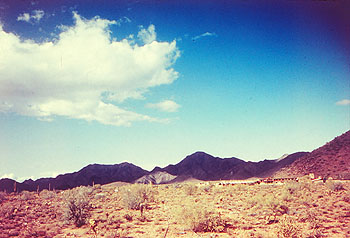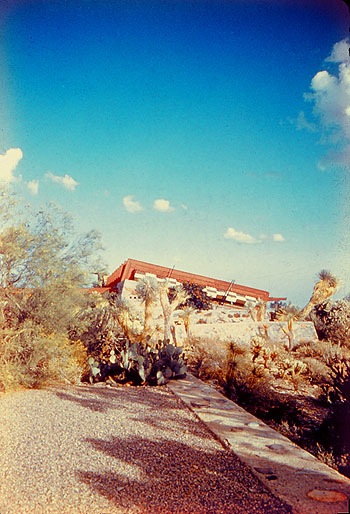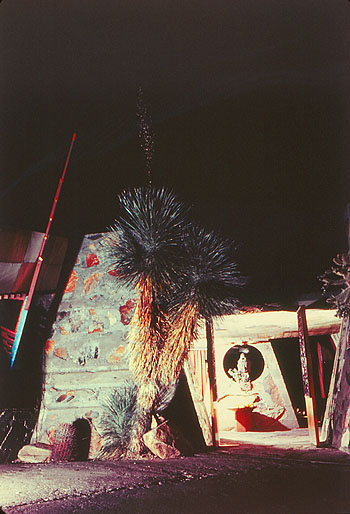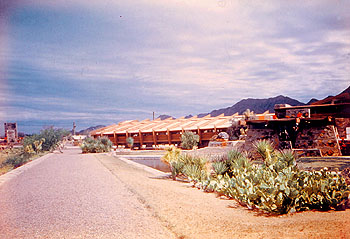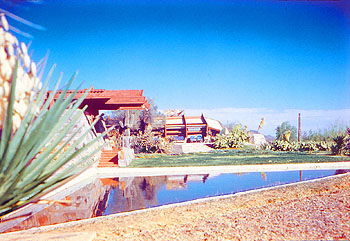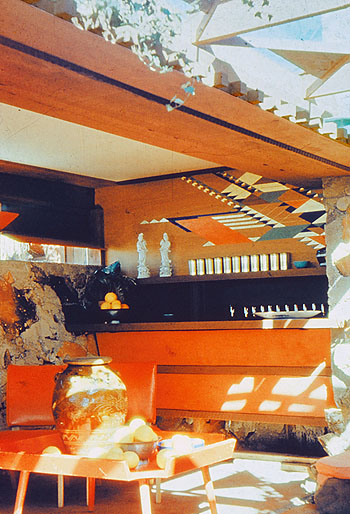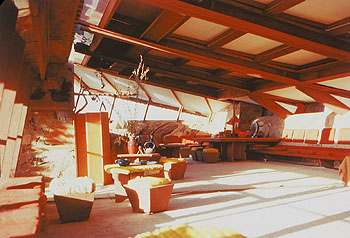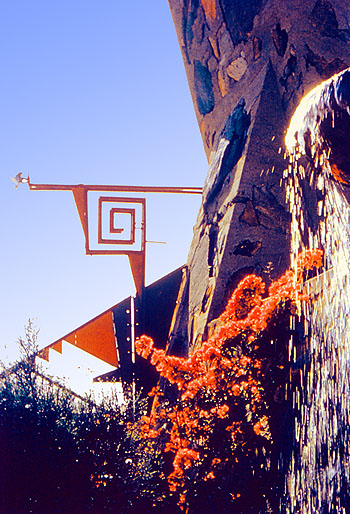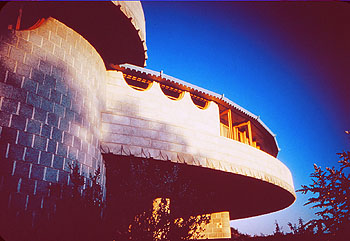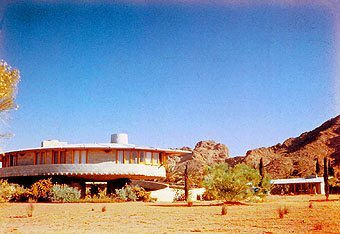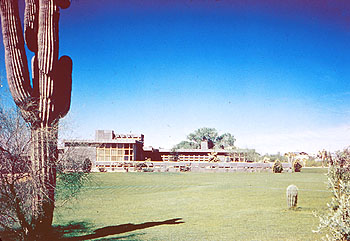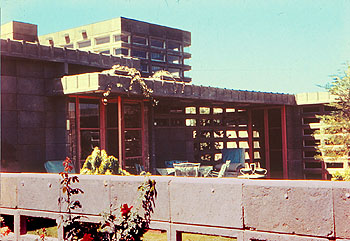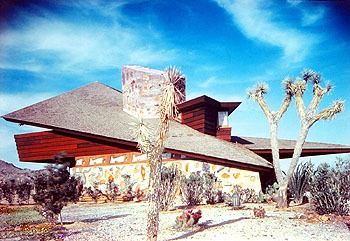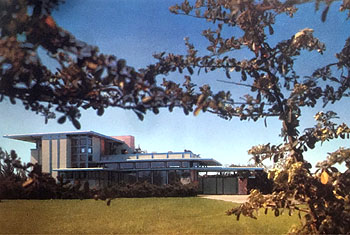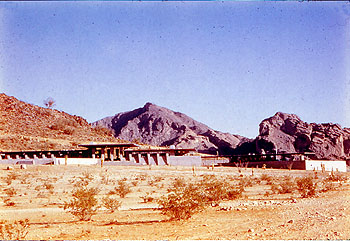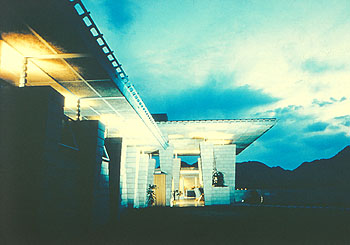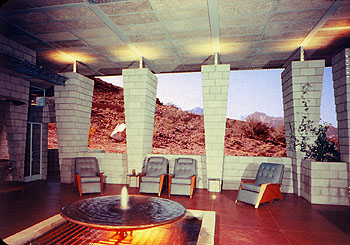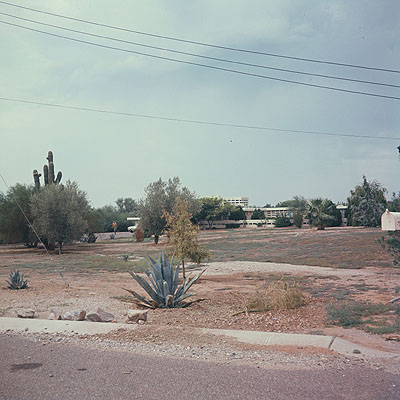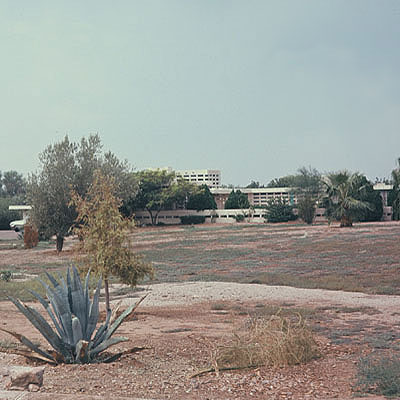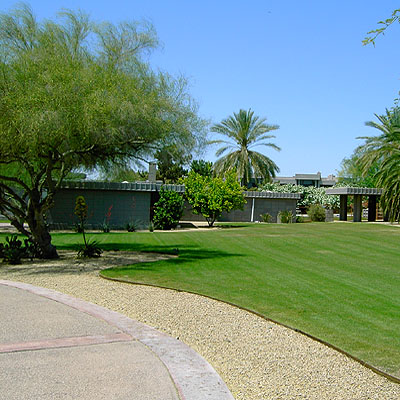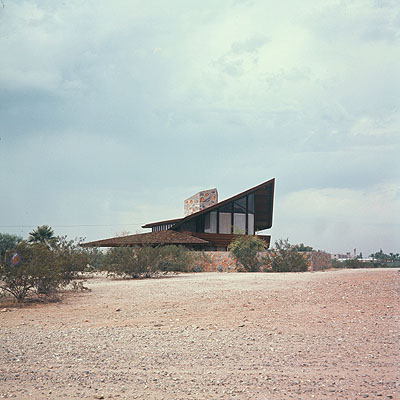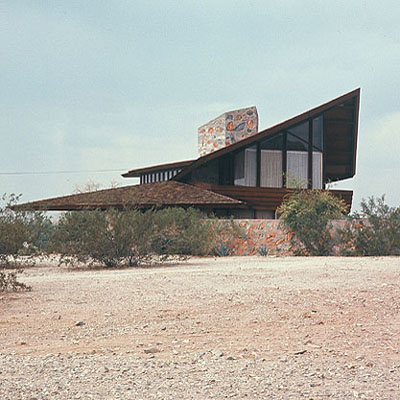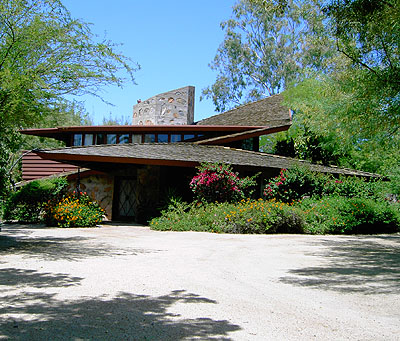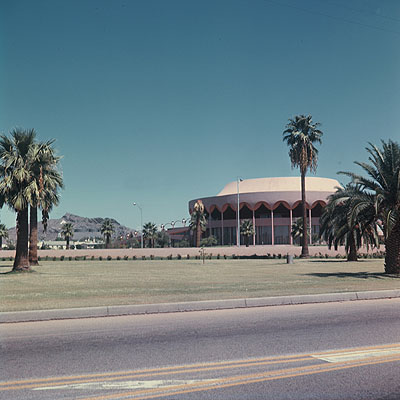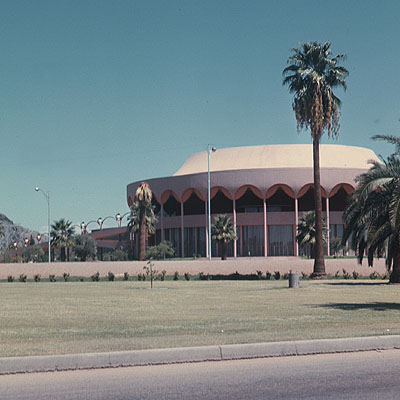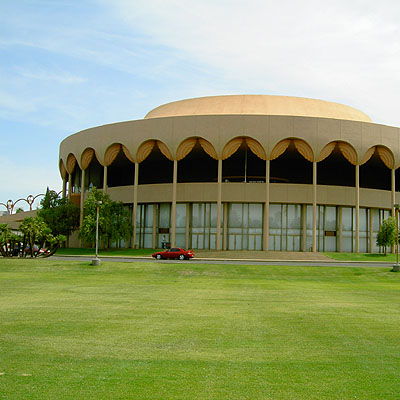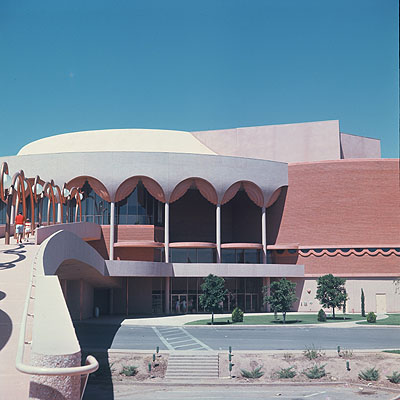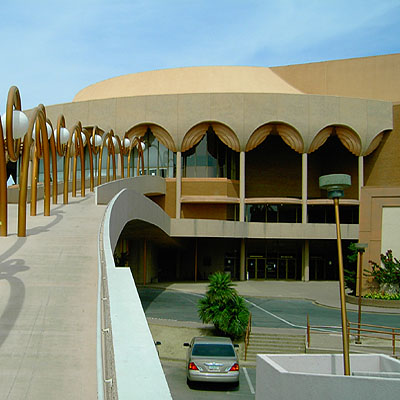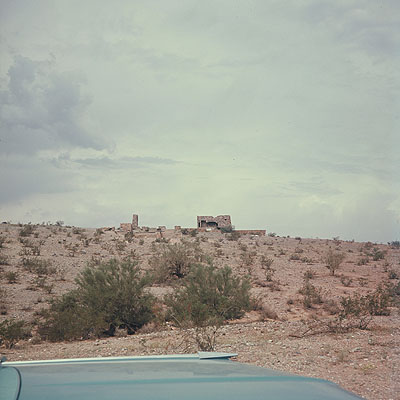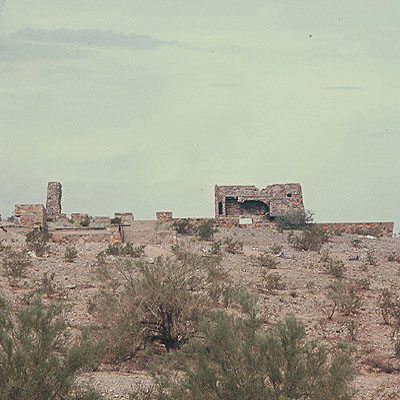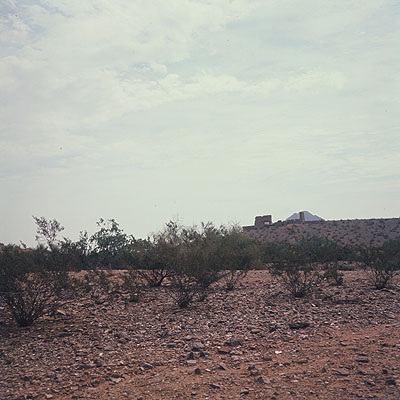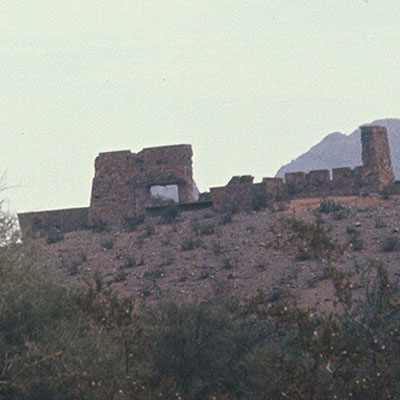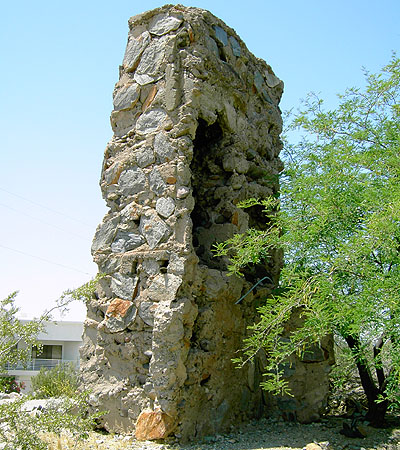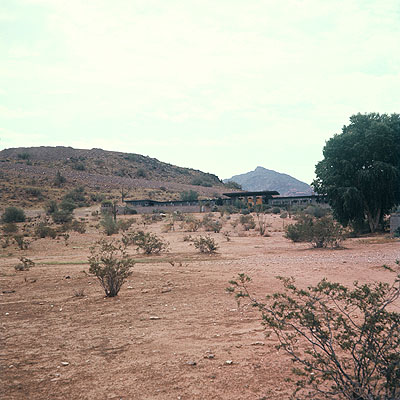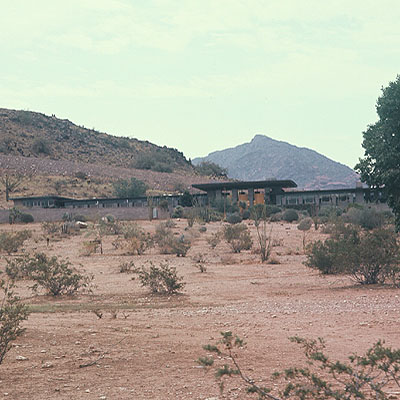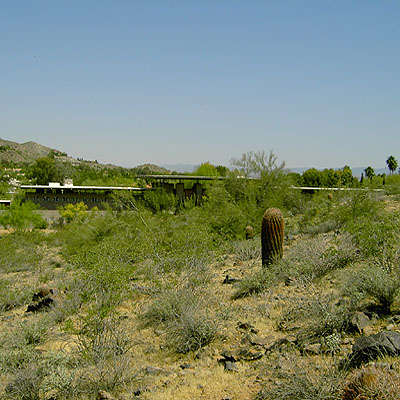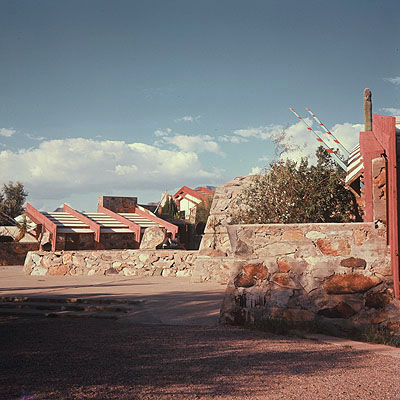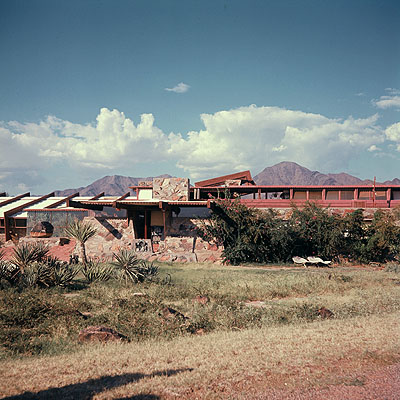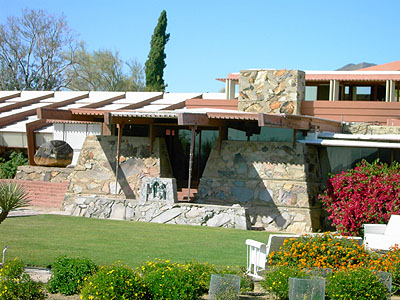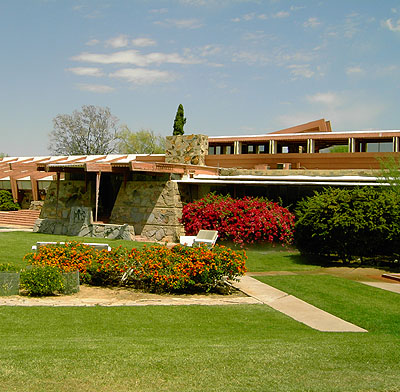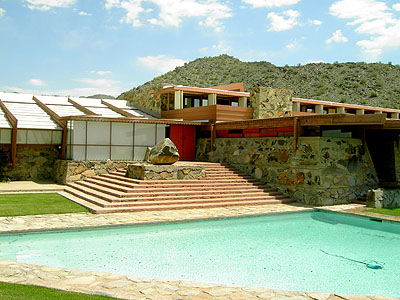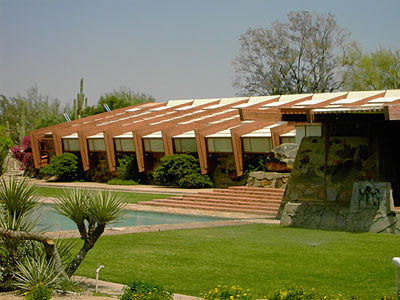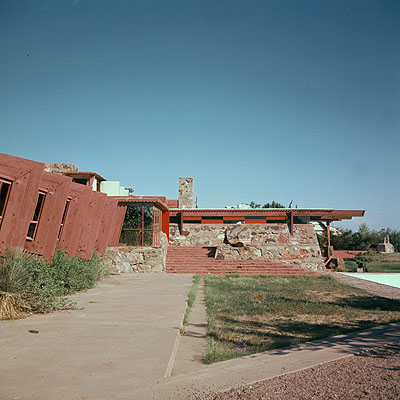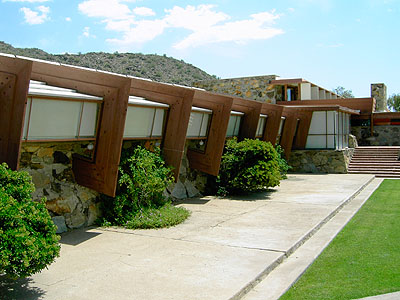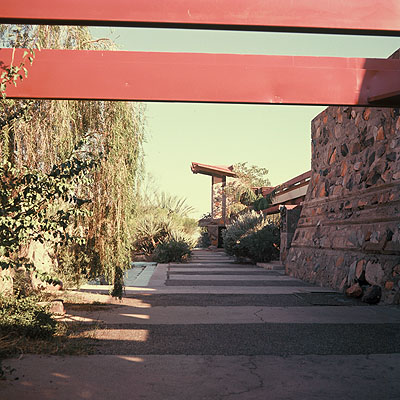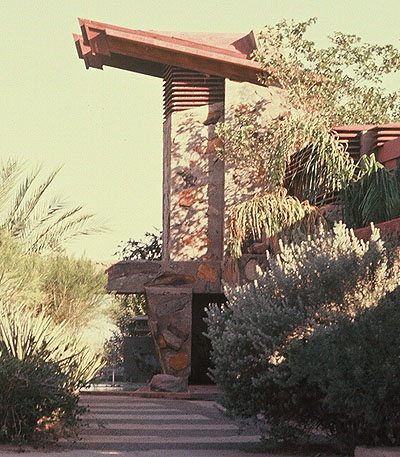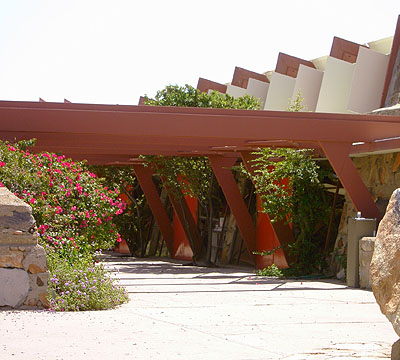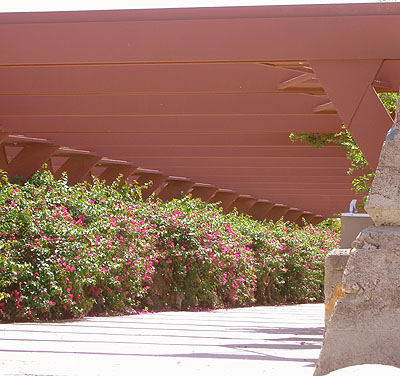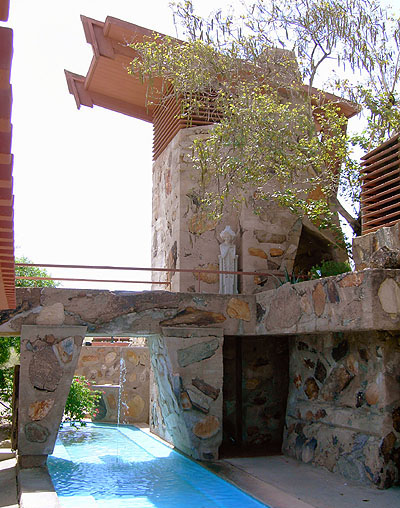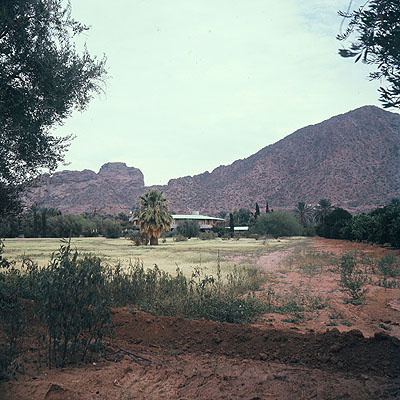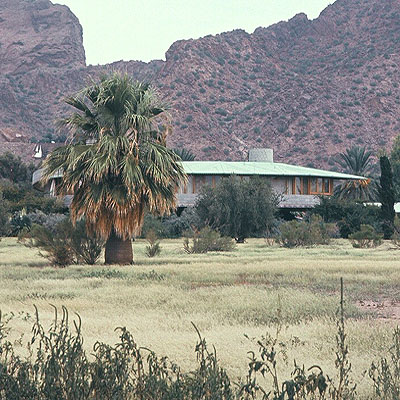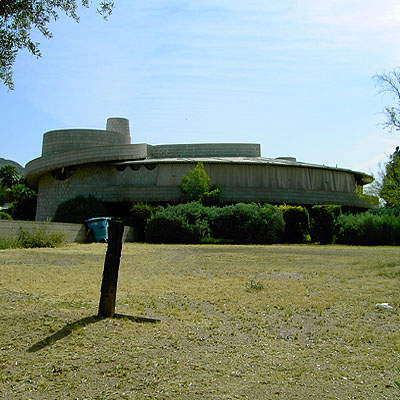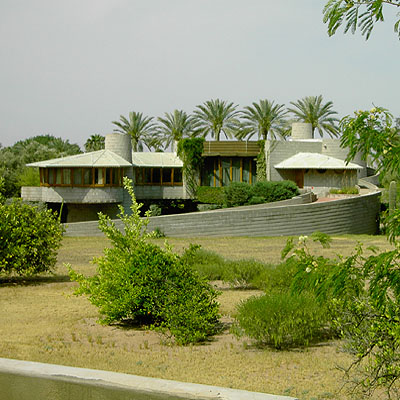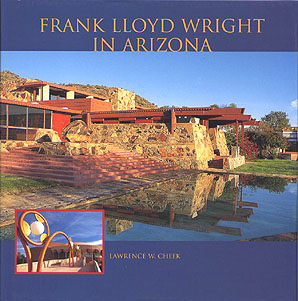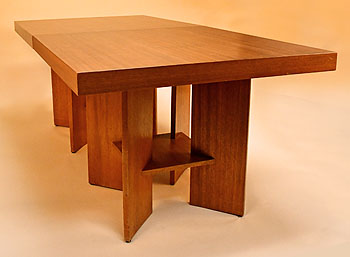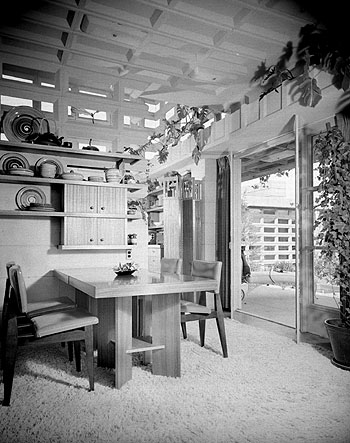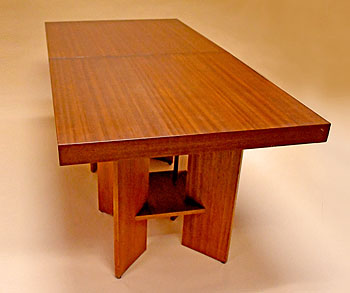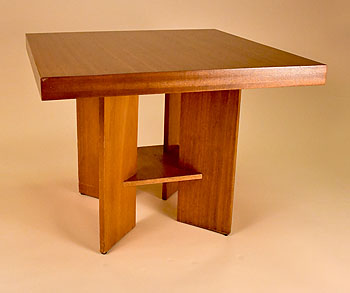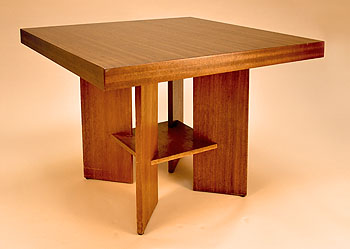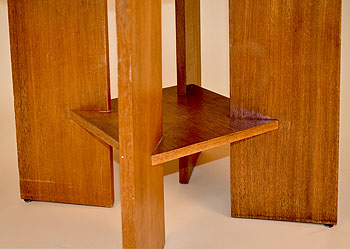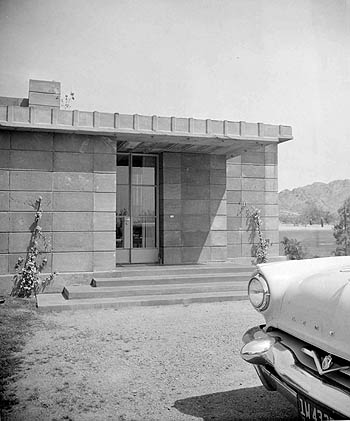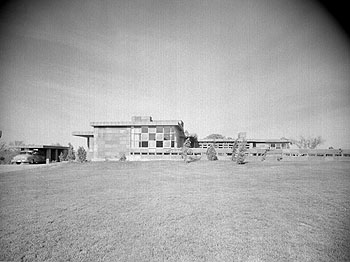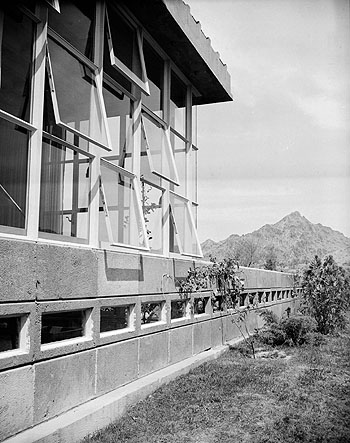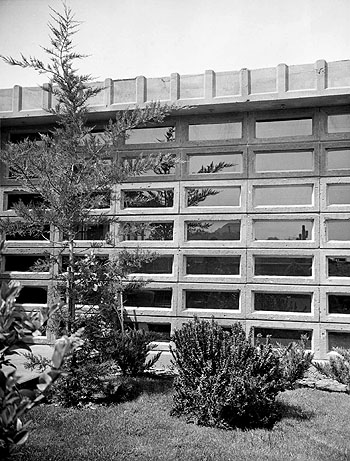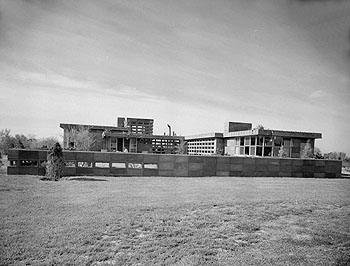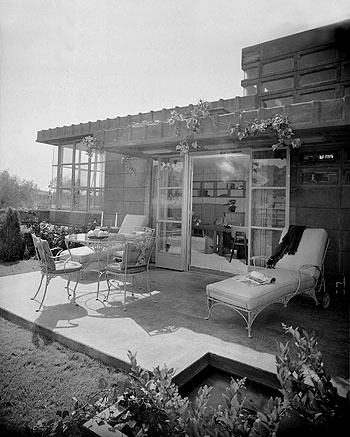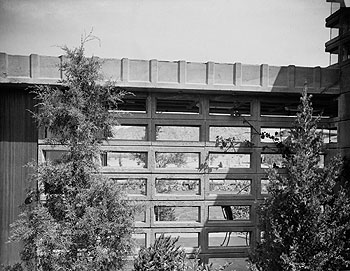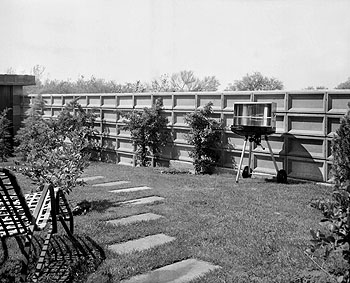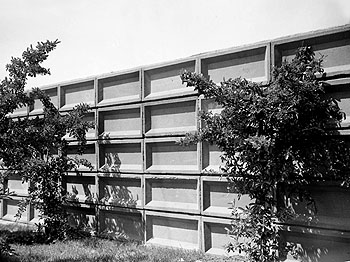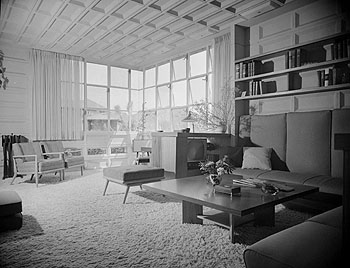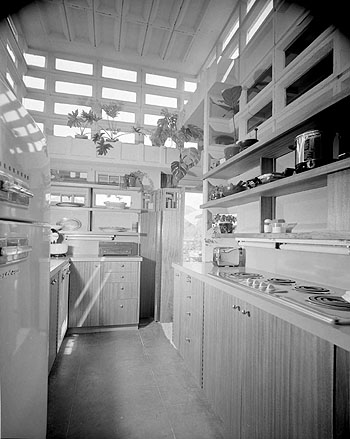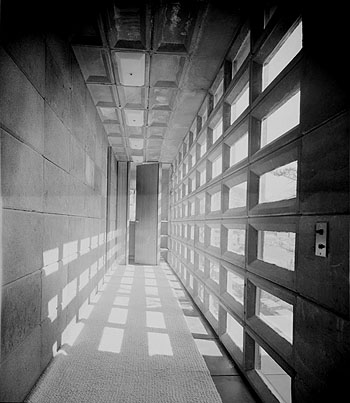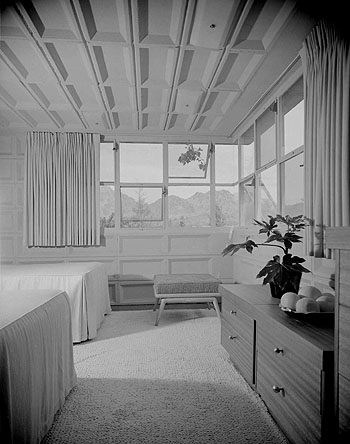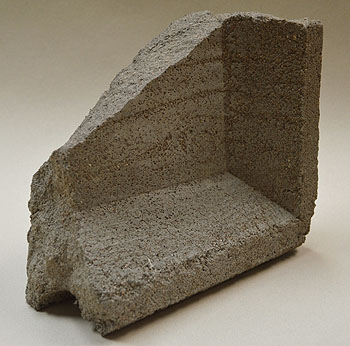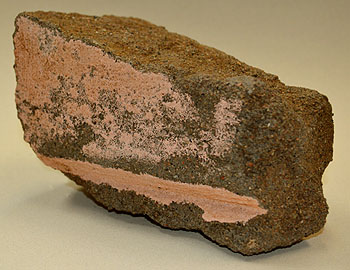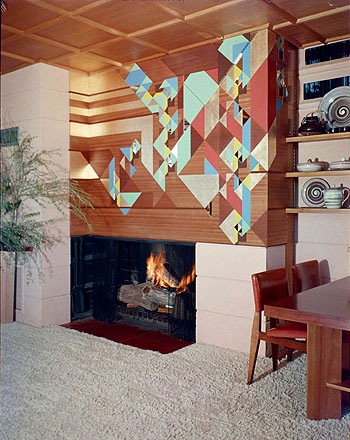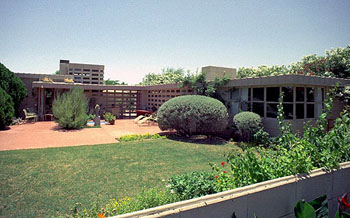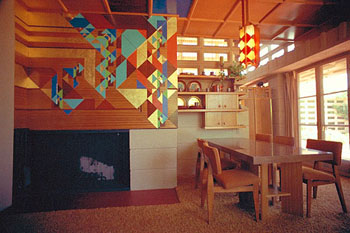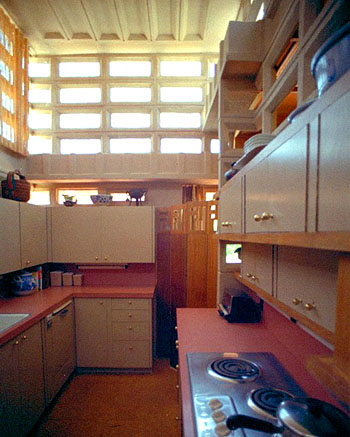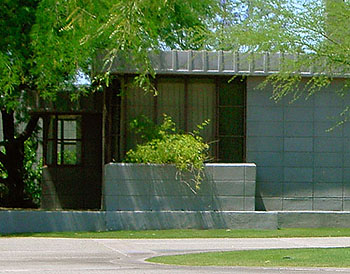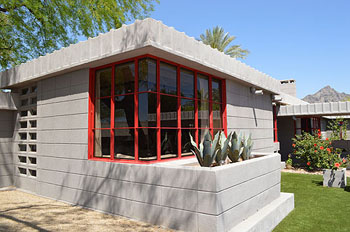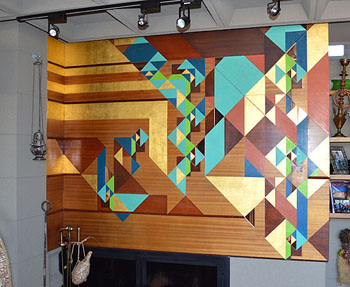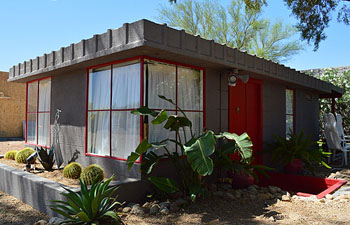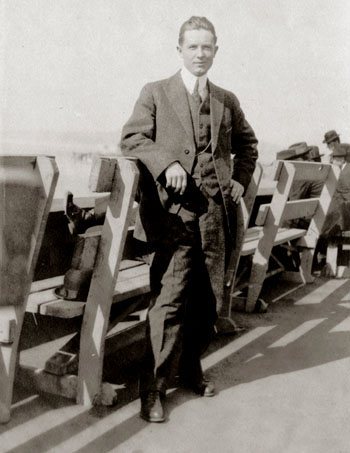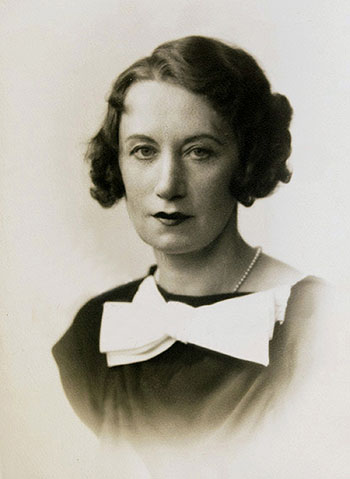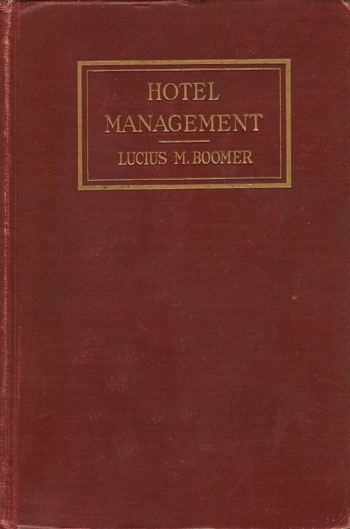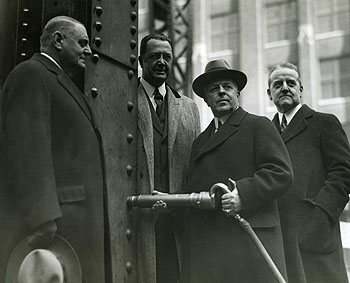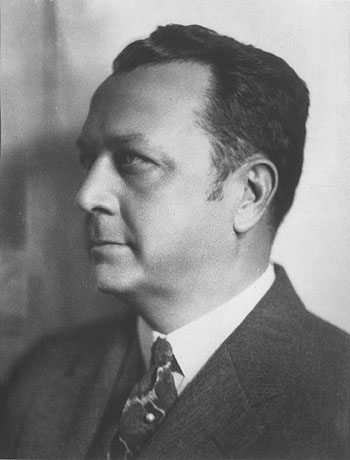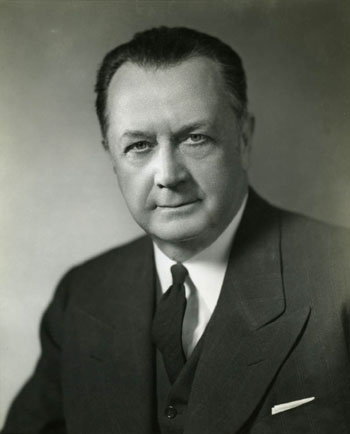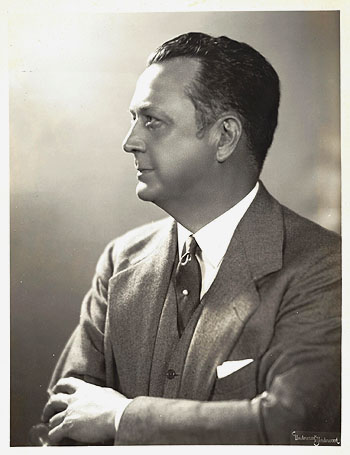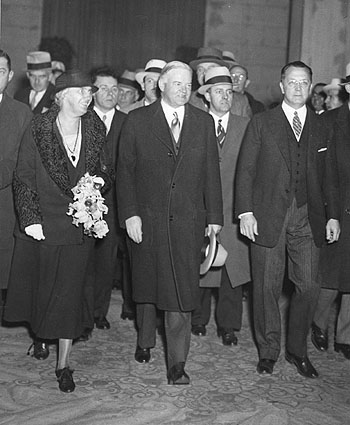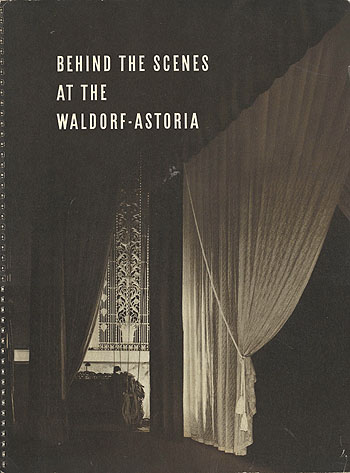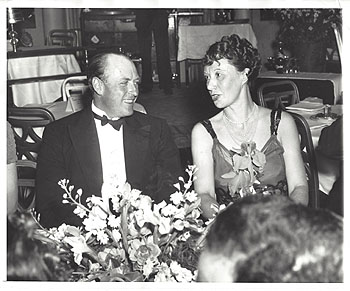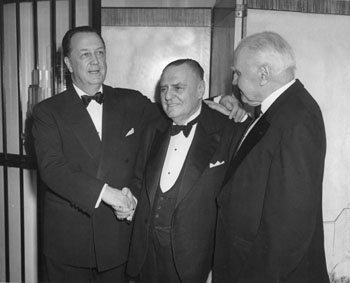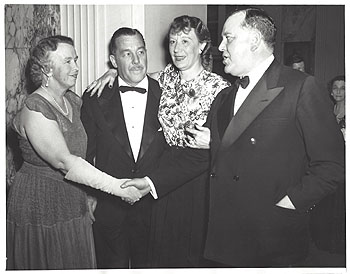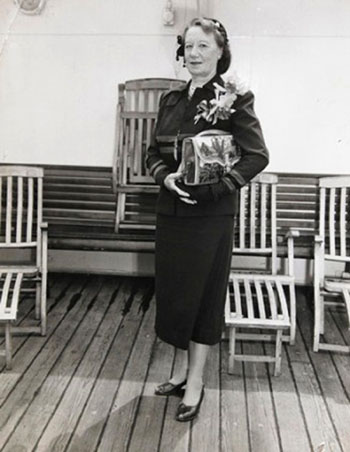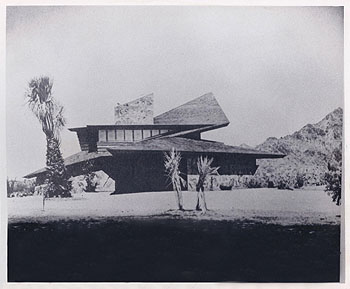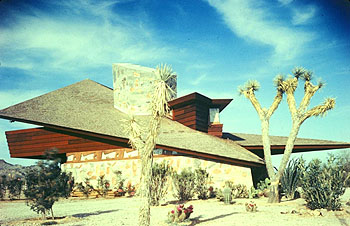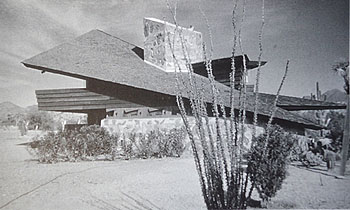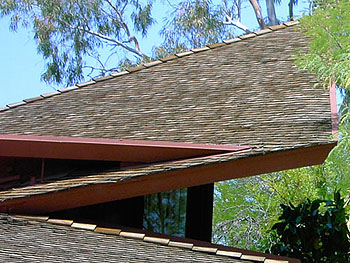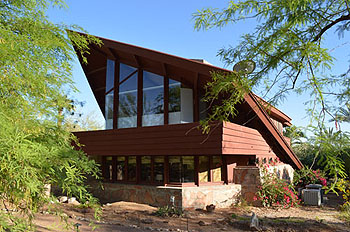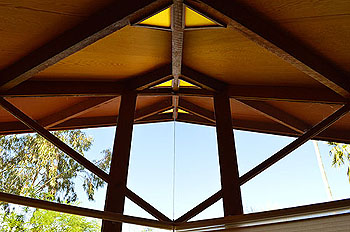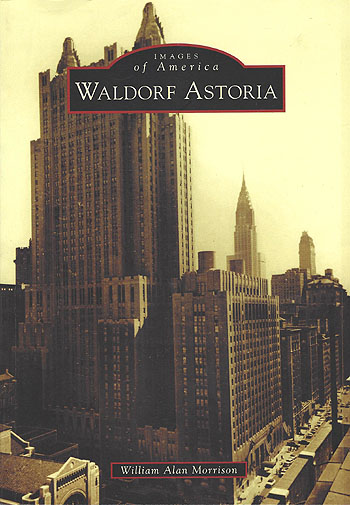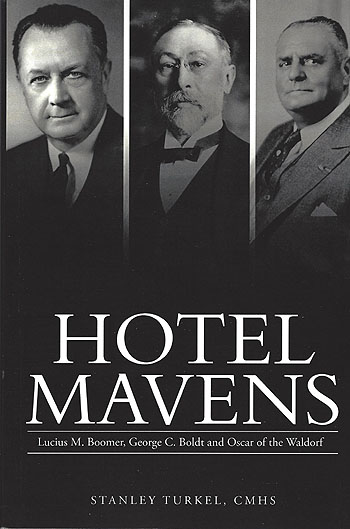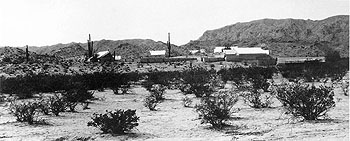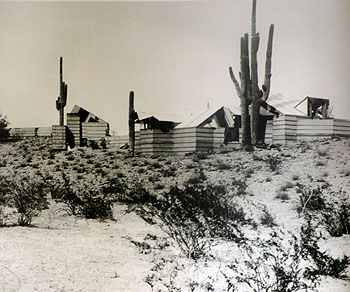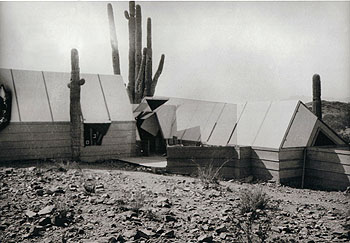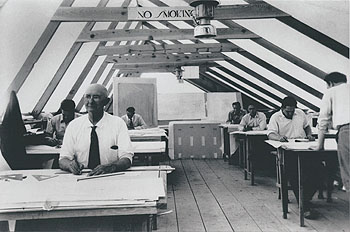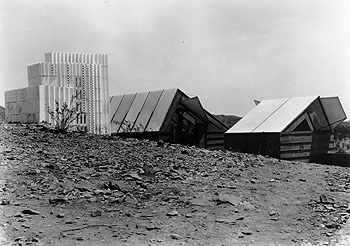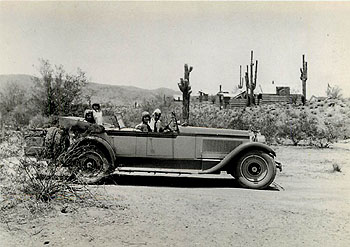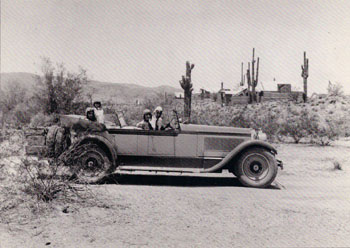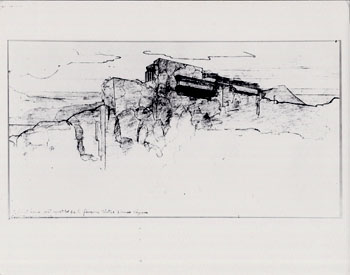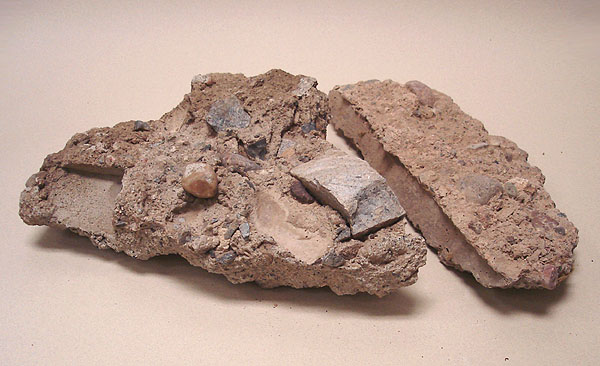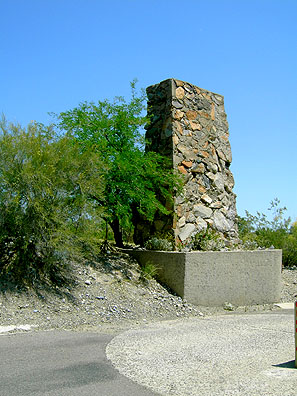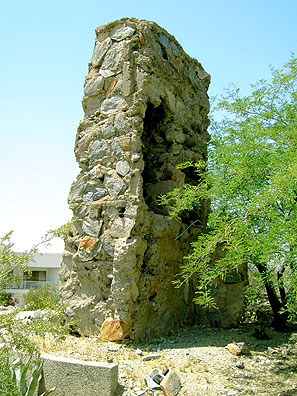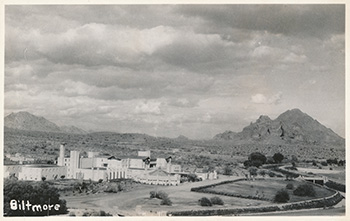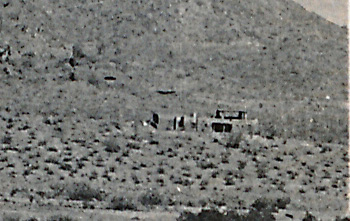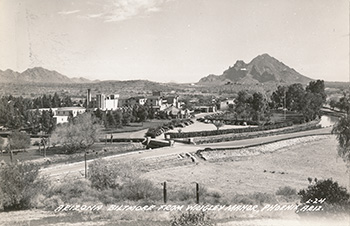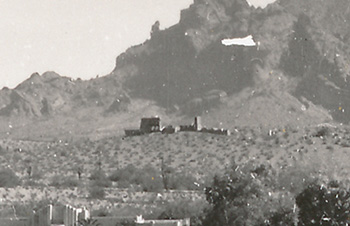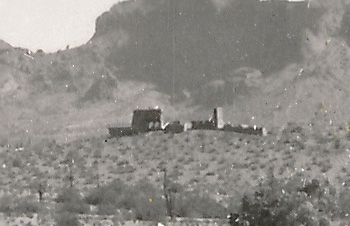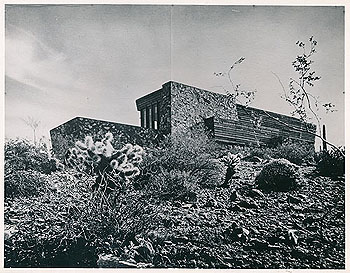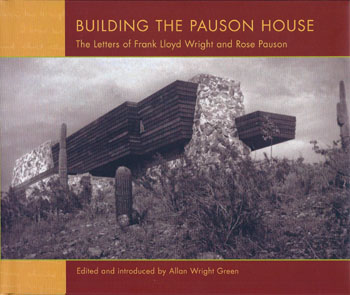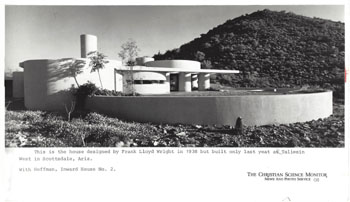
SUPPORT THE
WRIGHT LIBRARY
PROCEEDS FROM EVERY SALE GOES TO SUPPORT THE WRIGHT LIBRARY.
CLICK TO ORDER.
WE PROUDLY SUPPORT THE FRANK LLOYD WRIGHT FOUNDATION

WE PROUDLY SUPPORT THE FRANK LLOYD WRIGHT BUILDING CONSERVANCY
WE PROUDLY SUPPORT FALLINGWATER
AND THE WESTERN PENNSYLVANIA CONSERVANCY

ARIZONA ADELMAN ARIZONA ARIZONA BILTMORE BOOMER CARLSON FIRST CHRISTIAN CHURCH GRADY GAMMAGE LYKES OCATILLA
PAUSON PFEIFFER PIEPER PRICE TALIESIN WEST DAVID WRIGHTOTHER HOMES & BUILDINGS
ARIZONA 1956: Arizona 1956. Original set of 17 color slides (of a set of 18 slides) from the Color Classics From Arizona Highways offered in the February 1956 issue of Arizona Highways. A total of 18 color photographs of Frank Lloyd Wright’s work in Arizona were published in the issue and offered for sale (p.3). Taliesin west (8); David Wright (2); Benjamin Alelman (2); Jorgine Boomer (2); Raymond Carlson (1); Harold C. Price (3). Missing from the set is A13 - Jorgine Boomere. Also published in Black & White in the issue: Frank Lloyd Wright, Karsh, 1953, Taliesin West (7); Price (2); Adelman (3); Boomer (1); Carlson (3); David Wright (3). And floor plans of Taliesin West, Price, Adelman, Boomer (2), Carlson (3), David Wright (2). Original cost per slide 40c. Original 35mm color slides and 10.5 x 15.5 high res digital images. 1147.78.0118 (1-18) Date: 1956
Title: Arizona - Taliesin West 1956 (1937 - S.241).
Description: A1) Original set of 17 color slides (of a set of 18 slides) from the Color Classics From Arizona Highways offered in the February 1956 issue of Arizona Highways. View of Taliesin West from the drive leading to the complex on the mesa below McDowell Range. Taliesin West was designed by Frank Lloyd Wright in 1937. Published on the front and back cover. Caption: "Taliesin West - Approaching the Architect’s Camp On The Mesa Below McDowell Range. One of Arizona’s best known structures is Frank Lloyd Wright’s Taliesin West in the desert valley north of Scottsdale. This is the winter home of Mr. and Mrs. Wright and the study place of the Taliesin Fellowship. Taliesin was designed to fit into the surroundings and be part of the desert and Mesa, which it does so admirably." Printed on sleeve: "A1 - Approaching Taliesin West on the mesa below McDowell Range. Color Classics, Arizona Highways. Made in U.S.A."
Size: Original 35mm color slide and 10.5 x 15.5 high res digital image.
S#: 1147.78.0118 (1)Date: 1956
Title: Arizona - Taliesin West 1956 (1937 - S.241).
Description: A2) Original set of 17 color slides (of a set of 18 slides) from the Color Classics From Arizona Highways offered in the February 1956 issue of Arizona Highways. View of the drafting room at Taliesin West from the Northwest. Taliesin West was designed by Frank Lloyd Wright in 1937. Published on the inside front cover. Caption: "View of the draughting room at Taliesin West, Frank Lloyd Wright’s winter home in the Arizona desert." Printed on sleeve: "A2 -"Taliesin West. View of the drafting room from entrance court."
Size: Original 35mm color slide and 10.5 x 15.5 high res digital image.
S#: 1147.78.0118 (2)Date: 1956
Title: Arizona - Taliesin West 1956 (1937 - S.241).
Description: A3) Original set of 17 color slides (of a set of 18 slides) from the Color Classics From Arizona Highways offered in the February 1956 issue of Arizona Highways. Taliesin West at night. View of the Theater entrance with the doors open. Taliesin West was designed by FLW in 1937. Published on the inside back cover. Caption: "Taliesin West – night. View of theater entrance. By Allen Davidson. Frank Lloyd Wright’s Taliesin West is located north of Scottsdale in Paradise Valley at the foot of the McDowell Mountains. Here the architect and apprentices of the Fellowship spend fall and winter mountains (sic). This is a study of the entrance to the theater as residents and guests see it when attending motion pictures and recitals on Saturday and Sunday evening." Printed on sleeve: "A3 -"Taliesin West, night view of entrance to theatre."
Size: Original 35mm color slide and 10.5 x 15.5 high res digital image.
S#: 1147.78.0118 (3)Date: 1956
Title: Arizona - Taliesin West 1956 (1937 - S.241).
Description: A4) Original set of 17 color slides (of a set of 18 slides) from the Color Classics From Arizona Highways offered in the February 1956 issue of Arizona Highways. View of the Drafting room from the Sunset Terrace. View from the South. Taliesin West was designed by FLW in 1937. Published on page 19. Caption: "Taliesin – Draughting room from Sunset Terrace, view from the south." Printed on sleeve: "A4 -"Taliesin West, drafting room from sunset terrace."
Size: Original 35mm color slide and 10.5 x 15.5 high res digital image.
S#: 1147.78.0118 (4)Date: 1956
Title: Arizona - Taliesin West 1956 (1937 - S.241).
Description: A5) Original set of 17 color slides (of a set of 18 slides) from the Color Classics From Arizona Highways offered in the February 1956 issue of Arizona Highways. View of the office and Garden Room from across the triangular pool. Taliesin West was designed by Frank Lloyd Wright in 1937. Published on page 19. Caption: "From Main Terrace across the triangular pool toward the garden room." Printed on sleeve: "A5 -"Taliesin West from main terrace, yucca & pool."
Size: Original 35mm color slide and 10.5 x 15.5 high res digital image.
S#: 1147.78.0118 (5)Date: 1956
Title: Arizona - Taliesin West 1956 (1937 - S.241).
Description: A6) Original set of 17 color slides (of a set of 18 slides) from the Color Classics From Arizona Highways offered in the February 1956 issue of Arizona Highways. View of the Dining Room. Taliesin West was designed by Frank Lloyd Wright in 1937. Published on page 19. Caption: "Interior, Dining Room." Printed on sleeve: "A6 -"Taliesin West. Interior Dining Room."
Size: Original 35mm color slide and 10.5 x 15.5 high res digital image.
S#: 1147.78.0118 (6)Date: 1956
Title: Arizona - Taliesin West 1956 (1937 - S.241).
Description: A7) Original set of 17 color slides (of a set of 18 slides) from the Color Classics From Arizona Highways offered in the February 1956 issue of Arizona Highways. View of the Garden Room. Taliesin West was designed by Frank Lloyd Wright in 1937. Published on page 19. Caption: "Interior of Garden Room Overlooking Closed Garden." Printed on sleeve: "A7 -"Taliesin West. Interior Garden Room."
Size: Original 35mm color slide and 10.5 x 15.5 high res digital image.
S#: 1147.78.0118 (7)Date: 1956
Title: Arizona - Taliesin West 1956 (1937 - S.241).
Description: A8) Original set of 17 color slides (of a set of 18 slides) from the Color Classics From Arizona Highways offered in the February 1956 issue of Arizona Highways. View of Light tower and fountain basin. Taliesin West was designed by Frank Lloyd Wright in 1937. Published on page 19. Caption: "Stone Bastion, Entrance." Printed on sleeve: "A8 -"Taliesin West. Stone Bastion, Entrance."
Size: Original 35mm color slide and 10.5 x 15.5 high res digital image.
S#: 1147.78.0118 (8)Date: 1956
Title: Arizona - David Wright House 1956 (1950 - S.322).
Description: A9) Original set of 17 color slides (of a set of 18 slides) from the Color Classics From Arizona Highways offered in the February 1956 issue of Arizona Highways. View of David Wright house from the Southwest. It was designed by Frank Lloyd Wright for his son David in 1950 and was completed in 1953. Published on page 20. Caption: "Exterior of the David Right Patio – House." Printed on sleeve: "A9 -"Taliesin West (sic). Exterior of Patio House."
Size: Original 35mm color slide and 10.5 x 15.5 high res digital image.
S#: 1147.78.0118 (9)Date: 1956
Title: Arizona - David Wright House 1956 (1950 - S.322).
Description: A10) Original set of 17 color slides (of a set of 18 slides) from the Color Classics From Arizona Highways offered in the February 1956 issue of Arizona Highways. View of David Wright house from the Southeast. The Guest House can be seen to the right. Camelback Mountain is to the far right. The house was designed by Frank Lloyd Wright for his son David in 1950 and was completed in 1953. Published on page 20. Caption: "Patio-House Toward Camelback." Printed on sleeve: "A10 -"Taliesin West (sic). Patio House Looking Toward Camelback."
Size: Original 35mm color slide and 10.5 x 15.5 high res digital image.
S#: 1147.78.0118 (10)Date: 1956
Title: Arizona - Benjamin Adelman House 1956 (1951 - S.344).
Description: A11) Original set of 17 color slides (of a set of 18 slides) from the Color Classics From Arizona Highways offered in the February 1956 issue of Arizona Highways. View of Benjamin Adelman house from the East. The house was designed by Frank Lloyd Wright in 1951. Published on page 20-21. Caption: "Benjamin Adelman Usonian Type Cottage." Printed on sleeve: "A11 -"Usonian Type Cottage."
Size: Original 35mm color slide and 10.5 x 15.5 high res digital image.
S#: 1147.78.0118 (11)Date: 1956
Title: Arizona - Benjamin Adelman House 1956 (1951 - S.344).
Description: A12) Original set of 17 color slides (of a set of 18 slides) from the Color Classics From Arizona Highways offered in the February 1956 issue of Arizona Highways. Detail view of Benjamin Adelman house. The Living Room is on the far left, the tall Workspace, with glass filled perforated blocks is in the center. The house was designed by Frank Lloyd Wright in 1951. Published on page 21. Caption: "Detail of Work Space, Adelman Cottage." Printed on sleeve: "A12 -"Detail of Work Space Adelman Cottage."
Size: Original 35mm color slide and 10.5 x 15.5 high res digital image.
S#: 1147.78.0118 (12)A13) Missing Number 13. Arizona - Jorgine Boomer House 1956 (1953 - S.361). The house was designed by Frank Lloyd Wright in 1953. Published on page 21. Caption: "Jorgine Boomer Stone Mountain Cottage." Date: 1956
Title: Arizona - Jorgine Boomer House 1956 (1953 - S.361).
Description: A14) Original set of 17 color slides (of a set of 18 slides) from the Color Classics From Arizona Highways offered in the February 1956 issue of Arizona Highways. View of the Jorgine Boomer House from the Northeast. The house was designed by Frank Lloyd Wright in 1953. Published on page 21. Caption: "Jorgine Boomer Stone Mountain Cottage." Printed on sleeve: "A14 -"Another view of Stone Mountain Cottage."
Size: Original 35mm color slide and 10.5 x 15.5 high res digital image.
S#: 1147.78.0118 (14)Date: 1956
Title: Arizona - Raymond Carlson House 1956 (1950 - S.326).
Description: A15) Original set of 17 color slides (of a set of 18 slides) from the Color Classics From Arizona Highways offered in the February 1956 issue of Arizona Highways. The Raymond Carlson House viewed from the North. The house was designed by Frank Lloyd Wright in 1950. Published on page 21. Caption: "The Raymond Carlson Dwelling." Printed on sleeve: "A15 -"Carlson Dwelling."
Size: Original 35mm color slide and 10.5 x 15.5 high res digital image.
S#: 1147.78.0118 (15)Date: 1956
Title: Arizona - Harold C. Price House 1956 (1954 - S.378).
Description: A16) Original set of 17 color slides (of a set of 18 slides) from the Color Classics From Arizona Highways offered in the February 1956 issue of Arizona Highways. View of the Harold C. Price House from the South. The house was designed by Frank Lloyd Wright in 1954. Published on page 22. Caption: "The Harold C. Price House." Printed on sleeve: "A16 -"Wright Architecture, Exterior view Harold Price Desert House."
Size: Original 35mm color slide and 10.5 x 15.5 high res digital image.
S#: 1147.78.0118 (16)Date: 1956
Title: Arizona - Harold C. Price House 1956 (1954 - S.378).
Description: A17) Original set of 17 color slides (of a set of 18 slides) from the Color Classics From Arizona Highways offered in the February 1956 issue of Arizona Highways. View of the Price House Atrium at Night. The house was designed by Frank Lloyd Wright in 1954. Published on page 22. Caption: "The Harold C. Price House." Printed on sleeve: "A17 -"Atrium at Night."
Size: Original 35mm color slide and 10.5 x 15.5 high res digital image.
S#: 1147.78.0118 (17)Date: 1956
Title: Arizona - Harold C. Price House 1956 (1954 - S.378).
Description: A18) Original set of 17 color slides (of a set of 18 slides) from the Color Classics From Arizona Highways offered in the February 1956 issue of Arizona Highways. View of the Price House Atrium toward the surrounding mountains. The house was designed by Frank Lloyd Wright in 1954. Published on page 22. Caption: Toward Surrounding Mountains from Atrium." Printed on sleeve: "A18 - "Price House Toward Mountain."
Size: Original 35mm color slide and 10.5 x 15.5 high res digital image.
S#: 1147.78.0118 (18)The following twenty eight images were photographed in 1963 and 2004. Arizona 1963 - Set of twelve 2.25 x 2.25 Transparencies including digital images. Unknown photographer. It is Interesting to compare these 1963 images to the corresponding images from 2004.
Arizona in May 2004. This set of sixteen images correspond with the 1963 Set of twelve 2.25 x 2.25 transparencies. Photographed by Douglas M. Steiner.
Date: 1963 Title: 1) Benjamin Adelman Residence.
Description: Built in 1951. Storrer #344. Transparency is time stamped "Sept 63."
Size: 2.25 x 2.25 transparency.
S#: 1565.04.0606
Date: 2004 Title: 1) Benjamin Adelman Residence.
Description: Built in 1951. Storrer #344.
Size: 8 x 8 High Res Digital Image
ST#: 2004.19.0606
Date: 1963
Boomer Residence 1963 (Closeup)
Title: 2) Jorgine Boomer Residence. Built in 1953.
Description: Viewed from the Northeast. Nine years after the home was completed, the existing foliage has grown, but still remains sparse like the original 1954 images. Living room curtains have been replaced. Arizona Biltmore can be seen in the background on the right. The south end of the upper level has been greatly expanded. The walls are constructed of natural red desert stone set in concrete. Transparency is time stamped "Sept 63." Storrer #361. 2.25 x 2.25 transparency. For more information on the Boomer Residence see our Wright Study.
Size: 2.25 x 2.25 transparency.
S#: 1565.05.0606
Date: 2004 Title: 2) Boomer Residence.
Description: Built in 1953. Storrer #361. For more information on the Boomer Residence see our Wright Study.
Size: 8 x 8 High Res Digital Image
ST#: 2004.20.0606
Date: 1963
Gammage Memorial Auditorium 1963 (Closeup)
Title: 3) Gammage Memorial Auditorium.
Description: Built in 1959. Storrer #432. Transparency is time stamped "Sept 63."
Size: 2.25 x 2.25 transparency.
S#: 1565.06.0606
Date: 2004 Title: 3) Gammage Memorial Auditorium.
Description: Built in 1959. Storrer #432.
Size: 8 x 8 High Res Digital Image
ST#: 2004.21.0606
Date: 1963 Title: 4) Gammage Memorial Auditorium.
Description: Built in 1959. Storrer #432. Transparency is time stamped "Sept 63."
Size: 2.25 x 2.25 transparency.
S#: 1565.07.0606
Date: Gammage Memorial Auditorium 2004 Title: 4) Gammage Memorial Auditorium.
Description: Built in 1959. Storrer #432.
Size: 8 x 8 High Res Digital Image
ST#: 2004.22.0606
Date: 1963
Pauson Residence (Ruin) 1963 (Closeup)
Title: 5) Pauson Residence (Ruin).
Description: Built in 1939. Storrer #250. Constructed in 1939, destroyed by fire in 1942. “Desert Rubblestone” construction. For nearly 40 years the concrete foundation, walls and fireplace remained in ghostly ruins. These were destroyed in 1980 to make way for an extension of 32nd Street. Architect Edward M. Jones salvaged the 70 ton fireplace chimney mass and relocated it 200 yards to the south and incorporated it in the entrance to Alta Vista Park Estates where the Boomer and Benjamin Adelman residences are located. Chimney mass measures 9 x 11' at the base and is 26' tall. Transparency is time stamped "Sept 63."
Size: 2.25 x 2.25 transparency.
S#: 1565.08.0606
Date: 1963
Pauson Residence (Ruin) 1963 (Closeup)
Title: 6) Pauson Residence (Ruin).
Description: Built in 1939. Storrer #250. Constructed in 1939, destroyed by fire in 1942. “Desert Rubblestone” construction. For nearly 40 years the concrete foundation, walls and fireplace remained in ghostly ruins. These were destroyed in 1980 to make way for an extension of 32nd Street. Architect Edward M. Jones salvaged the 70 ton fireplace chimney mass and relocated it 200 yards to the south and incorporated it in the entrance to Alta Vista Park Estates where the Boomer and Benjamin Adelman residences are located. Chimney mass measures 9 x 11' at the base and is 26' tall. Transparency is time stamped "Sept 63."
Size: 2.25 x 2.25 transparency.
S#: 1565.09.0606
Date: 2004 Title: 5) Pauson Residence (Ruin).
Description: Built in 1939. Storrer #250. Constructed in 1939, destroyed by fire in 1942. “Desert Rubblestone” construction. For nearly 40 years the concrete foundation, walls and fireplace remained in ghostly ruins. These were destroyed in 1980 to make way for an extension of 32nd Street. Architect Edward M. Jones salvaged the 70 ton fireplace chimney mass and relocated it 200 yards to the south and incorporated it in the entrance to Alta Vista Park Estates where the Boomer and Benjamin Adelman residences are located. Chimney mass measures 9 x 11' at the base and is 26' tall.
Size: 8 x 8 High Res Digital Image
ST#: 2004.23.0606
Date: 1963
Harold Price, Sr., Residence 1963 (Closeup)
Title: 7) Harold Price, Sr., Residence.
Description: Built in 1954. Storrer #378. Transparency is time stamped "Sept 63."
Size: 2.25 x 2.25 transparency.
S#: 1565.10.0606
Date: 2004 Title: 6) Harold Price, Sr., Residence.
Description: Built in 1954. Storrer #378.
Size: 8 x 8 High Res Digital Image
ST#: 2004.24.0606
Date: 1963 Title: 8) Taliesin West.
Description: Built in 1937. Storrer #241. Transparency is time stamped "Sept 63."
Size: 2.25 x 2.25 transparency.
S#: 1565.11.0606
Date: 1963 Title: 9) Taliesin West.
Description: Built in 1937. Storrer #241. Transparency is time stamped "Sept 63."
Size: 2.25 x 2.25 transparency.
S#: 1565.12.0606
Date: 2004 Title: 7) Taliesin West.
Description: Built in 1937. Storrer #241.
Size: 8 x 10 High Res Digital Image
ST#: 2004.25.0606
Date: 2004 Title: 8) Taliesin West.
Description: Built in 1937. Storrer #241.
Size: 8 x 8 High Res Digital Image
ST#: 2004.26.0606
Date: 2004 Title: 9) Taliesin West.
Description: Built in 1937. Storrer #241.
Size: 8 x 10 High Res Digital Image
ST#: 2004.27.0606
Date: 2004 Title: 10) Taliesin West.
Description: Built in 1937. Storrer #241. Transparency is time stamped "Sept 63."
Size: 8 x 10 High Res Digital Image
ST#: 2004.28.0606
Date: 1963 Title: 10) Taliesin West.
Description: Built in 1937. Storrer #241. Transparency is time stamped "Sept 63."
Size: 2.25 x 2.25 transparency.
S#: 1565.13.0606
Date: 2004 Title: 11) Taliesin West.
Description: Built in 1937. Storrer #241.
Size: 8 x 10 High Res Digital Image
ST#: 2004.29.0606
Date: 1963
Taliesin West 1963 (Closeup)
Title: 11) Taliesin West.
Description: Built in 1937. Storrer #241. Transparency is time stamped "Sept 63."
Size: 2.25 x 2.25 transparency.
S#: 1565.14.0606
Date: 2004 Title: 12) Taliesin West.
Description: Built in 1937. Storrer #241.
Size: 8 x 8 High Res Digital Image
ST#: 2004.30.0606
Date: 2004 Title: 13) Taliesin West.
Description: Built in 1937. Storrer #241.
Size: 8 x 8 High Res Digital Image
ST#: 2004.31.0606
Date: 2004 Title: 14) Taliesin West.
Description: Built in 1937. Storrer #241.
Size: 8 x 10 High Res Digital Image
ST#: 2004.32.0606
Date: 1963
David Wright Residence 1963 (Closeup)
Title: 12) David Wright Residence.
Description: Built in 1950. Storrer #322. Transparency is time stamped "Sept 63."
Size: 2.25 x 2.25 transparency.
S#: 1565.15.0606
Date: 2004 Title: 15) David Wright Residence.
Description: Built in 1950. Storrer #322.
Size: 8 x 8 High Res Digital Image
ST#: 2004.33.0606
Date: 2004 Title: 16) David Wright Residence.
Description: Built in 1950. Storrer #322.
Size: 8 x 8 High Res Digital Image
ST#: 2004.34.0606
Date: 2006
Title: Frank Lloyd Wright in Arizona (Published by Rio Nuevo Publishers, Tucson, Arizona)
Author: Cheek, Lawrence W.
Description: "Wright fell in love with the desert quickly and profoundly. It was a vast, blank canvas ... it was an open-air warehouse of natural forms, colors, and textures that both delighted and inspired him." 50 color photos. Original HC list price 16.95. (First Edition)
Size: 8.25 x 8.25
Pages: Pp 72
ST#: 2006.01.0306
Date: 1953
Title: Benjamin Adelman House Dining Room Table, Phoenix, AZ, 1953 (1951 - S.344).
Description: Original two piece Dining Room table for the Benjamin Adelman House. Designed by Frank Lloyd Wright in 1951. Wright designed a laundry facility and three homes for Benjamin Adelman, and a home (two schemes) for his son, Albert Adelman. Wright's first project for Benjamin Adelman was a commercial building for his laundry and dry-cleaning business in Milwaukee in 1945. It remained a project. One year later, 1946, Benjamin's son Albert, approached Wright about designing a home for him on a lot he owned in Fox Point, Wisconsin. Scheme #1 remained a project, but Scheme #2, 1948, was completed. That same year, 1948, Wright designed a beautiful home on a bluff overlooking Lake Michigan in Fox Point, Wisconsin for Benjamin Adelman. The design remained a project. In 1951, Wright designed a second home for Benjamin Adelmen in Phoenix. This home was completed and is considered to be the first Usonian Automatic House designed by Wright. In 1954 Wright designed a second home for Benjamin Adelman in Fox point, but it too remained a project.
Although the Benjamin Adelman was the first Usonian Automatic House designed by Frank Lloyd Wright, it was not the first to be built. In 1952, one year after designing the Adelman house, Wright design the second Usonian Automatic for Arthur Pieper, an apprentice, who also became his son-in-law on June 18, 1954. Pieper built his home in early 1952.
Designed in 1951, the home was not built until 1953. Benjamin Adelman purchased a lot and a half from Jorgine Boomer. Construction on the Adelman House began in 1953, and was most likely completed in late 1953 or early 1954. Shortly after the house was completed Maynard Parker photographed the house, and this dining room table was prominently featured. At the same time, Parker also photographed a Living Room coffee table of the same design.
Like other Dining Room tables from Wright’s Usonian period, the dining room table was modular in style. Sections could be moved and used as separate tables. Others included the Shavin 1950, Harold Price (Arizona) 1954, and Gordon 1956. It is also similar in design to other wright tables. The Tracy dining room table is similar, but is a single piece (1955). The table is constructed of Mahogany plywood. Acquired from Toomey Galleries, Oak Park. See additional Wright furniture...
Size: The top of the tables are 32" square and 2.5" deep. The height of the table is 27." The legs are 8" wide and turned 45 degrees. 8" up from the bottom of the legs is a 12" x 12" shelf that intersects all four legs at the corners.
S#: 1987.126.0521Date: Circa 1953-54 Title: 1) Benjamin Adelman Residence Set of 15 photographs, circa 1953-54 (1951 - S.344).
Description: Although the Benjamin Adelman was the first Usonian Automatic House designed by Frank Lloyd Wright, it was not the first to be built. In 1952, one year after designing the Adelman house, Wright design the second Usonian Automatic for Arthur Pieper, an apprentice, who also became his son-in-law on June 18, 1954. Pieper built his home in early 1952. Designed in 1951, the home was not built until 1953. Benjamin Adelman purchased a lot and a half from Jorgine Boomer. "For the consideration of Ten Dollars, and other valuable considerations, I, Jorgine Boomer, a widow, do hereby convey to Benjamin E. Adelman and Regina B. Adelman, his wife..." Warranty Deed, March 30, 1953. This set of 15 photographs were taken after the home was completed and landscaped, and most likely in late 1953 or early 1954.
Entrance of the Adelman House viewed from the South, circa 1953-54. The corner of the roof cantilevers out over the entrance to the home. When you entered the home, and pass the coast closet, you find yourself in the Living Room. The Master Bedroom is on the left, the Living Room is on the right. Piestewa (Squaw) Peak can be seen in the background. Photographed by Maynard Parker. For more information on the Adelman Residence see our Wright study.
Size: 8 x 9.5 B&W photograph.
S#: 0987.82-0415-1
Date: Circa 1953-54 Title: 2) Benjamin Adelman Residence viewed from the east, circa 1953-54 (1951 - S.344).
Description: View of the Adelman House from the East, circa 1953-54. The carport is on the far left, the Living Room is in the foreground left of center. The Guest House can be seen in the background to the right. The low block wall in the foreground encloses the Garden Court. Photographed by Maynard Parker. For more information on the Adelman Residence see our Wright study.
Size: 10 x 7.5 B&W photograph.
S#: 0987.82-0415-2
Date: Circa 1953-54 Title: 3) Benjamin Adelman Residence viewed from the southeast, circa 1953-54 (1951 - S.344).
Description: View from the Southeast. The Living Room is on the left, circa 1953-54. Metal cames divide the windows into two-foot squares. The corner windows have mitered glass corners. The row of perforated blocks in the Living Room are glazed. As the wall continues North, blocks are left unglazed, and surrounds the Garden Court. Piestewa (Squaw) Peak can be seen in the background. Photographed by Maynard Parker. For more information on the Adelman Residence see our Wright study.
Size: 8 x 10 B&W photograph.
S#: 0987.82-0415-3
Date: Circa 1953-54 Title: 4) Benjamin Adelman Residence Guest House, circa 1953-54 (1951 - S.344).
Description: View of the Guest House exterior Gallery wall, viewed from the East, circa 1953-54. Perforated blocks are glazed with glass. The Main house and Terrace are to the left, Guest House sitting Room to the right. Photographed by Maynard Parker. For more information on the Adelman Residence see our Wright study.
Size: 8 x 10 B&W photograph.
S#: 0987.82-0415-4
Date: Circa 1953-54 Title: 5) Benjamin Adelman Residence from the North, circa 1953-54 (1951 - S.344).
Description: View of the Adelman House from the North, circa 1953-54. The Living Room is on the left, the tall Workspace, with glass filled perforated blocks is in the center background. The covered Terrace and walkway that joins the two buildings is in the center. A female, possibly Mrs. Adelman, can be seen setting the table on the Terrace. The Guest House and sitting Room is on the right. The low block wall in the foreground encloses the Garden Court. Photographed by Maynard Parker. For more information on the Adelman Residence see our Wright study.
Size: 10 x 7.6 B&W photograph.
S#: 0987.82-0415-5
Date: Circa 1953-54 Title: 6) Benjamin Adelman Residence terrace, circa 1953-54 (1951 - S.344).
Description: View of the Terrace from the Northeast, circa 1953-54. The Living Room is on the left, the tall Workspace, with glass filled perforated blocks is in the background on the right. The roof over the Terrace is cantilevered. Lines were etched into the terrace, creating two foot squares. The doors lead to the Dining area and Living Room. The Dining table appears to be designed by Wright. Built-in seating and shelves can be seen in the Living Room. A four foot by four foot pool can be seen in the foreground. Photographed by Maynard Parker. For more information on the Adelman Residence see our Wright study.
Size: 8 x 10 B&W photograph.
S#: 0987.82-0415-6
Date: Circa 1953-54 Title: 7) Benjamin Adelman Residence perforated walkway wall, circa 1953-54 (1951 - S.344).
Description: View of the Northern Garden Court from outside the walkway's perforated block wall, circa 1953-54. Viewed from the South. The Guest House is on the left, the Main House is to the right. Piestewa (Squaw) Peak can be seen in the background. "Grille block, glazed with clear glass, creates weatherproof screen wall retaining the trellis-like quality of the open garden wall..." House Beautiful, November, 1955, p.318. Photographed by Maynard Parker. For more information on the Adelman Residence see our Wright study.
Size: 10 x 8 B&W photograph.
S#: 0987.82-0415-7
Date: Circa 1953-54 Title: 8) Benjamin Adelman Residence perforated walkway wall and Guest House, circa 1953-54 (1951 - S.344).
Description: View of the Guest House from the Southeast, circa 1953-54, photographed from outside the walkway's perforated block wall. The perforated blocks of the Guest House Gallery are glazed. "Trellis wall made from blocks with open center sections carries rhythm of over-all design into garden walls and can support structural roof load." House Beautiful, November, 1955, p.318. Photographed by Maynard Parker. For more information on the Adelman Residence see our Wright study.
Size: 8 x 10 B&W photograph.
S#: 0987.82-0415-8
Date: Circa 1953-54 Title: 9) Benjamin Adelman Residence block wall, circa 1953-54 (1951 - S.344).
Description: View of block wall between the carport and the Guest House, circa 1953-54. The wall offered a measure of privacy from the Arizona Biltmore. "Transition between protected living spaces and garden is accomplished with complete unity. Any portion of solid fence could be open or glazed grille depending upon need and situation." House Beautiful, November, 1955, p.318. Photographed by Maynard Parker. For more information on the Adelman Residence see our Wright study.
Size: 10 x 8 B&W photograph.
S#: 0987.82-0415-9
Date: Circa 1953-54 Title: 10) Benjamin Adelman Residence block wall, circa 1953-54 (1951 - S.344).
Description: Detail of the block wall, most likely between the carport and the Guest House, circa 1953-54. Photographed by Maynard Parker. For more information on the Adelman Residence see our Wright study.
Size: 10 x 7.5 B&W photograph.
S#: 0987.82-0415-10
Date: Circa 1953-54 Title: 11) Benjamin Adelman Residence Living Room, circa 1953-54 (1951 - S.344).
Description: View of the Living Room, from the Entrance, circa 1953-54. The Fireplace and Workspace are on the left, built-in desk, seating and shelves are on the right. The built-in desk doubles as an enclosure to the built-in seating. There is a Wright designed coffee table in front of the seating. The Dining Room is to the left. The coffered ceiling blocks created a consistent pattern throughout the house. The Boomer Residence can be seen through the windows. "Network of slender reinforced rods in joints of block-work is continued in patterning of frames for glass. As a result, although window heights and sizes vary, unity of over-all design is maintained." House Beautiful, November, 1955, p.317. Photographed by Maynard Parker. For more information on the Adelman Residence see our Wright study.
Size: 10 x 7.5 B&W photograph.
S#: 0987.82-0415-11
Date: Circa 1953-54 Title: 12) Benjamin Adelman Residence Dining area, circa 1953-54 (1951 - S.344).
Description: View of the Dining area, from the East, circa 1953-54. Shelves and cabinets are built-in. The table appears to be designed by Frank Lloyd Wright, but no verification of the dining room chairs. The workspace is behind the dining room wall. Doors lead to the Terrace. The Guest House can be seen in the background. Photographed by Maynard Parker. For more information on the Adelman Residence see our Wright study. See original Dining Room Table...
Size: 8 x 10 B&W photograph.
S#: 0987.82-0415-12
Date: Circa 1953-54 Title: 13) Benjamin Adelman Residence Workspace, circa 1953-54 (1951 - S.344).
Description: View of the Workspace, from the South, circa 1953-54. Shelves and cabinets are built-in. Glazed perforated blocks offer an abundance of light to the workspace. The Dining Room and Terrace are through the doorway on the right. There are no seams along the outside edges of the ceiling, which appears to indicate that the ceiling may have been poured over the pattered blocks. Much like the concept Wright used at Taliesin West. Forms were created, desert rock was placed into the forms, then concrete poured into the forms, creating a solid mass. This was also used in the Boomer Residence just next door. In this case it would appear that Wright built the walls, then created forms for the ceilings, placed the 1 foot by 2 foot blocks, then poured concrete, creating a single slab. Wright also added concrete "beams" for strength. The Adelman House was the first Usonian Automatic house, and there were issues with the ceilings. Wright devised a different concept for the other Usonian Automatic homes that were built. Photographed by Maynard Parker. For more information on the Adelman Residence see our Wright study.
Size: 8 x 10 B&W photograph.
S#: 0987.82-0415-13
Date: Circa 1953-54 Title: 14) Benjamin Adelman Residence Guest House Gallery, circa 1953-54 (1951 - S.344). photograph.
Description: View of the Guest House Gallery, circa 1953-54, viewed from the South. The Guest Bedroom is to the left, the Sitting Room is at the end of the hall, the Terrace and Garden Court is to the right. The perforated blocks are glazed with glass, forming a glass-block wall. While the ceiling and perforated blocks are concave, the built-in ceiling light fixtures are convex. Although designed as a sitting room with a fireplace, a door was added at the end of the hall, and the sitting room became a bedroom. Photographed by Maynard Parker. For more information on the Adelman Residence see our Wright study.
Size: 8 x 9.25 B&W
S#: 0987.82-0415-14
Date: Circa 1953-54 Title: 15) Benjamin Adelman Residence Guest House sitting room, circa 1953-54 (1951 - S.344).
Description: View of the Guest House Sitting Room, circa 1953-54, viewed from the South. Although designed as a sitting room with a fireplace, a door was added at the end of the hall, and the sitting room became a bedroom. While the ceiling and perforated blocks are concave, the built-in ceiling light fixtures are convex. Piestewa (Squaw) Peak can be seen through the windows. "One basic block forms both walls and ceiling in unified, coffered pattern. Note how the ceiling lights and the window fenestration line up with blocks used as modules." House Beautiful, November, 1955, p.317. Photographed by Maynard Parker. For more information on the Adelman Residence see our Wright study.
Size: 8 x 10 B&W photograph.
S#: 0987.82-0415-15
Date: Circa 1953-57
Title: Benjamin Adelman Residence Coffered Block Fragment, circa 1953-7 (1951 - S.344).
Description: Designed in 1951, the home was not built until 1953. Benjamin Adelman purchased a lot and a half from Jorgine Boomer. "For the consideration of Ten Dollars, and other valuable considerations, I, Jorgine Boomer, a widow, do hereby convey to Benjamin E. Adelman and Regina B. Adelman, his wife..." Warranty Deed, March 30, 1953. The Adelman residence is considered to be the first Usonian Automatic House designed by Frank Lloyd Wright. In 1936, Wright developed a series of homes he called Usonian. He continued to develop the concept, and in the early 1950s he first used the term Usonian Automatic to describe a Usonian style house made of inexpensive concrete blocks. The modular blocks could be assembled in a variety of ways. A precursor to the Usonian Automatic system were the four Textile Block homes in California, Millard (La Miniatura) S.214, Storer S.215, Freeman S.216, and the Ennis S.217. The basic concrete block of the Usonian Automatic system is 12 x 24 inches, and comes in a variety of styles: plain for the walls; coffered, creating a waffle pattern; perforated, with and without glass. In 1957, Adelman commissioned Wright again to enlarge his cottage. The Living Room was expanded to the South and East, with a planting box on the Southeast Corner. The Master Bedroom was expanded to the South, and the Master Bath was enlarged and expanded to the West. Blocks were placed next to and on top of each other. The edges, when place together formed a 1.5" tube. Rebar rods were centered in the tube, and concrete poured to fill the tube. Providence: Acquired from a private collection that originally acquired the block fragment in 1975.
Size: 8.5" wide x 7.25" tall x 3.4" deep.
S#: 1205.65.0315
Date: Circa 1953-57 Title: Benjamin Adelman Residence Concrete Fragment, circa 1953-7 (1951 - S.344).
Description: Designed in 1951, the home was not built until 1953. Benjamin Adelman purchased a lot and a half from Jorgine Boomer. "For the consideration of Ten Dollars, and other valuable considerations, I, Jorgine Boomer, a widow, do hereby convey to Benjamin E. Adelman and Regina B. Adelman, his wife..." Warranty Deed, March 30, 1953. The Adelman residence is considered to be the first Usonian Automatic House designed by Frank Lloyd Wright. In 1936, Wright developed a series of homes he called Usonian. He continued to develop the concept, and in the early 1950s he first used the term Usonian Automatic to describe a Usonian style house made of inexpensive concrete blocks. The modular blocks could be assembled in a variety of ways. A precursor to the Usonian Automatic system were the four Textile Block homes in California, Millard (La Miniatura) S.214, Storer S.215, Freeman S.216, and the Ennis S.217. The basic concrete block of the Usonian Automatic system is 12 x 24 inches, and comes in a variety of styles: plain for the walls; coffered, creating a waffle pattern; perforated, with and without glass. In 1957, Adelman commissioned Wright again to enlarge his cottage. The Living Room was expanded to the South and East, with a planting box on the Southeast Corner. The Master Bedroom was expanded to the South, and the Master Bath was enlarged and expanded to the West. This piece of concrete does not appear to concrete block, but a piece of concrete. It is grooved, giving the appearance of a seem. It is also painted pink, Wright’s "Desert Rose," on one surface, indicating an original interior color, and also indicating that this may be a fragment of an interior surface. Providence: Acquired from the present owner in 2014. It was buried on the property.
Size: 7" wide x 4.25" tall x 4" deep.
S#: 1205.66.0415
Date: Circa 1957-58 Title: Benjamin Adelman Residence Living Room Fireplace, circa 1957-58 (1951 - S.344).
Description: Photograph of the Fireplace, circa 1957-58. The Living Room features a geometric wall mural above the fireplace, designed by Eugene Masselink. One major change is the wood ceiling. The coffered blocks have been covered. Although the trim follows a two foot square pattern. The pottery on the shelves is the same as the 1953-54 image #12, but rearranged. Besides documenting the fireplace, this image reveals its original details and colors. The walls are painted a light pink, What Wright called "Desert Rose." The chair seats and backs are a red vinyl. A clue to the paneled ceiling could be a note written on the plans for the 1957 remodel. "Note: Cover all inside faces of all exterior walls and ceilings with 3/8" waterproof finish plywood, veneered on exposed face with ribbor-striped Philippine mahogany..." This photograph was taken at night by Maynard Parker. For more information on the Adelman Residence see our Wright study.
Size: 8 x 10 Color photograph.
S#: 1205.64.0415
Date: 1956
Title: Arizona - Benjamin Adelman House 1956 (1951 - S.344).
Description: A11) Original set of 17 color slides (of a set of 18 slides) from the Color Classics From Arizona Highways offered in the February 1956 issue of Arizona Highways. View of Benjamin Adelman house from the East. The house was designed by Frank Lloyd Wright in 1951. Published on page 20-21. Caption: "Benjamin Adelman Usonian Type Cottage." Printed on sleeve: "A11 -"Usonian Type Cottage."
Size: Original 35mm color slide and 10.5 x 15.5 high res digital image.
S#: 1147.78.0118 (11)Date: 1956
Title: Arizona - Benjamin Adelman House 1956 (1951 - S.344).
Description: A12) Original set of 17 color slides (of a set of 18 slides) from the Color Classics From Arizona Highways offered in the February 1956 issue of Arizona Highways. Detail view of Benjamin Adelman house. The Living Room is on the far left, the tall Workspace, with glass filled perforated blocks is in the center. The house was designed by Frank Lloyd Wright in 1951. Published on page 21. Caption: "Detail of Work Space, Adelman Cottage." Printed on sleeve: "A12 -"Detail of Work Space Adelman Cottage."
Size: Original 35mm color slide and 10.5 x 15.5 high res digital image.
S#: 1147.78.0118 (12)Date: 1963 Title: 1) Benjamin Adelman Residence.
Description: Built in 1951. Storrer #344. Transparency is time stamped "Sept 63."
Size: 2.25 x 2.25 transparency.
S#: 1565.04.0606
Date: Circa 1968 Title: 1) Benjamin Adelman Residence viewed from the North, circa 1968 (1951 - S.344).
Description: Benjamin Adelman Residence viewed from the North, circa 1968. The landscaping is very mature, 17 years old. The large trees on the left are overtaking the Living Room. The Living Room is on the far left. The Dining area is to the left and behind the bush next to the small pool. The tall Workspace is seen in the center background. The covered walkway runs from the Dining area glass doors on the left, to the Guest House on the right. The Walkway has not yet been enclosed. The perforated block wall on the right side of the walkway is left unglazed with glass. The Master Bath that was enlarged in the 1957 remodel can be seen threw the perforated blocks as can the carport to its right. The Terrace, which used to end at the middle of the small pool (Parker 1953 #6), has been enlarged to the North approximately 20 feet. A sculpture on a pedestal has been added. The Guest Wing is on the right. The perforated blocks of the Gallery are glazed. The sitting room, which was used as a bedroom is on the far right. Two planter boxes on the left side of the covered walkway are still there. Photographed by William Storrer, Courtesy of the Oak Park Public Library. For more information on the Adelman Residence see our Wright study.
Size: 10 x 6 B&W photograph
S#: 1757.14-0415 1
Date: Circa 1968 Title: 2) Benjamin Adelman Residence Fireplace and Dining Area, circa 1968 (1951 - S.344).
Description: Benjamin Adelman Residence Fireplace and Dining area, circa 1968. The Living Room fireplace was designed by Eugene Masselink. The original coffered block ceiling, with 1 foot x 2 foot embedded blocks, has been covered with mahogany plywood. The trim follows a two foot square pattern. The Dining table appears to be designed by Frank Lloyd Wright. The chair seats and backs are a red vinyl. A note written on the plans for the 1957 remodel read: "Note: Cover all inside faces of all exterior walls and ceilings with 3/8" waterproof finish plywood, veneered on exposed face with ribbor-striped Philippine mahogany..." Storrer indicated that furniture and the Wright designed chandelier was sold in the late 1980s. Photographed by William Storrer, Courtesy of the Oak Park Public Library. For more information on the Adelman Residence see our Wright study.
Size: 10 x 6 B&W photograph.
S#: 1757.14-0415 2
Date: Circa 1968 Title: 3) Benjamin Adelman Residence Workspace, circa 1968 (1951 - S.344).
Description: View of the Workspace, from the South, circa 1968. Lower mahogany cabinets appear to be recovered with a laminate. Upper cabinets have been added. Glazed perforated blocks offer an abundance of light to the workspace. The dining Room and Terrace are through the doorway in the background on the right. Photographed by William Storrer, Courtesy of the Oak Park Public Library. For more information on the Adelman Residence see our Wright study.
Size: 10 x 6 B&W photograph.
S#: 1757.14-0415 3
Date: 2004 Title: Benjamin Adelman Residence, 2004 (1953 - S.344).
Description:
Set of 5 images of the Exterior of the Adelman Residence, photographed in April 26, 2004 by Douglas M. Steiner. The 1957 entrance, originally on the South side of the house (left), has been blocked off and replaced with perforated/glazed blocks. The entry stairs that were on the left, have also been removed. The Entrance has been moved to the right side of the Living Room. Perforated blocks have been added to the fireplace chimney. The 1957 Living Rooms windows and built-in planter box remain intact. Glass corners are mitered. The original Carport is now enclosed. In 1957, Frank Lloyd Wright proposed an addition to the back of the Carport, to be used the "Servant's Room." It appears that the Carport was enclosed instead. Windows were added to the two front corners. The Living Room was extended 10 feet South and two feet East in 1957. Windows were added to the Southeast corner, as well as the built-in planter. Original 5 images. For more information on the Adelman Residence see our Wright Study. (ST#2004.42.0404) (1-5)
Size: Five original 10 x 7.5 color images.
ST#: 2004.42.0404 (1-5)
Date: 2014 Title: Benjamin Adelman Residence, 2014 (1953 - S.344).
Description: Set of 50 images of the Exterior of the Adelman Residence, photographed in April 17, 2014 by Douglas M. Steiner. We had that opportunity at the Adelman Residence. The owners were very gracious and allowed us not only to closely view the exterior, but also the interior. Frank Lloyd Wright designed the home in 1951 as a summer cottage. In 1957, Wright enlarged the Living and Master Bedroom of the main house. In 1988, the main home was extensively renovation and enlarged to the North by Fred Bloch, an architect who had worked under Edgar Tafel. The main house and guest wing were also joining by enclosing the walkway. Although the 1988 renovation was extensive, it maintained the 1' x 2' block dimensions, and 1' increments in the roof fascia. There are also extensive sections from the original 1951 Wright design and Wright's 1957 remodel that remain intact. Original 50 images. For more information on the Adelman Residence see our Wright Study. (ST#2014.20.0414) (1-50)
Size: Original 10 x 7.5 color images.
ST#: 2014.20.0414 (1-50)
Date: 2014 Title: Benjamin Adelman Residence, 2014 (1953 - S.344).
Description: Set of 9 images of the Interior of the Adelman Residence, photographed in April 17, 2014 by Douglas M. Steiner. We had that opportunity at the Adelman Residence. The owners were very gracious and allowed us not only to closely view the exterior, but also the interior. Frank Lloyd Wright designed the home in 1951 as a summer cottage. In 1957, Wright enlarged the Living and Master Bedroom of the main house. In 1988, the main home was extensively renovation and enlarged to the North by Fred Bloch, an architect who had worked under Edgar Tafel. Although the 1988 renovation was extensive, it maintained the 1' x 2' block dimensions, and 1' increments in the roof fascia. There are also extensive sections from the original 1951 Wright design and Wright's 1957 remodel that remain intact. Original nine images. For more information on the Adelman Residence see our Wright Study. (ST#2014.21.0414) (1-9)
Size: Original 10 x 7.5 color images.
ST#: 2014.21.0414 (1-9)
Date: 2014 Title: Benjamin Adelman Residence, 2014 (1953 - S.344).
Description: Set of 14 images of the Adelman Residence Guest House, photographed in April 17, 2014 by Douglas M. Steiner. We had that opportunity at the Adelman Residence. The owners were very gracious and allowed us not only to closely view the exterior, but also the interior. Frank Lloyd Wright designed the home in 1951 as a summer cottage. In 1957, Wright enlarged the Living and Master Bedroom of the main house. The original Carport is now enclosed. In 1957, Frank Lloyd Wright proposed an addition to the back of the Carport, to be used the "Servant's Room." It appears that the Carport was enclosed instead. Windows were added to the two front corners. Original 14 images. For more information on the Adelman Residence see our Wright Study. (ST#2014.22.0414) (1-14)
Size: Original 10 x 7.5 color image.
ST#: 2014.22.0414 (1-14)
JORGINE BOOMER RESIDENCE (1953 - S.361) Date: Circa 1908 Title: Lucius M. Boomer, Circa 1908 (1953 - S.261)
Description: Boomer was born in New York on August 22, 1878, and passed away on June 26, 1947 in Norway. His parents were Lucius S. Boomer and Berthaldine Sterling Boomer. Owned or managed a number of hotels with industrialist Thomas Coleman DuPont. Courtesy of the State Archives of Florida. For more information on the Boomer Residence see our Wright Study.
Size: 6 x 9 B&W photograph.
S#: 0085.33.1014
Date: Circa 1922 Title: Jorgine Slettede Boomer, circa 1922 (possible 35 years old) (1953 - S.261)
Description: She was born on August 18, 1887 in Norway. In 1903, at the age of 16, she and her older sister immigrated to the United States, finally arriving at their Uncles farm in Fergus Falls, Minnesota. She eventually became a student nurse and then was admitted to Columbia University of Physicians and Surgeons in New York City. In 1915, she married Richard Sloane, one of the faculty members at Columbia. Six months later she was widowed. She married Lucius Boomer in September, 1920. She hired Frank Lloyd Wright to design a home in 1953, the Boomer Residence, and gave it to the Phoenix Art Museum in 1958. She passed away on May 7, 1971. For more information on the Boomer Residence see our Wright Study.
Size: 5 x 6.75 B&W photograph.
S#: 0147.06.1014
Date: 1925 Title: Hotel Management, Principles and Practice (Hard Cover) (Published by Harper & Brothers, New York and London) (1953 - S.261)
Author: Boomer, Lucius M.
Description: The definitive work on the scientific hotel management in the mid-twentieth century. Lucius M. Boomer was one of the most well known hoteliers of the early twentieth century, and an extraordinary man to say the least. He was born in New York on August 22, 1878 and passed away at the age of 68, on June 26, 1947 in Oslo, Norway from a heart aliment. By 1918, at the age of 39, he was president of the Boomer-duPont Properties Corporation. By 1922, not only was he the Chairman of the Waldorf-Astoria Hotel Corporation, he owned and managed six high-end hotels in New York City, Washington D. C. and Philadelphia, four of which were in New York City, including the original and current Waldorf-Astoria. He authored many articles on hotel management, and was quoted in more articles that can be counted. He was the committee Chairman on curriculum for the school at Cornell. He was a member of the Educational Committee of the American Hotel Association was appointed to formulate a curriculum for an intensive University course in hotel training, which most likely evolved into this volume, which was translated into many languages. Original list price $6.00. (First Edition) For more information on the Boomer Residence see our Wright Study.
Size: 6.1 x 9.4
Pages: Pp 495
S#: 0171.25.1014
Date: 1930 Title: Lucius M. Boomer, ceremonially driving the first steel rivet of the new Waldorf Astoria, March 24, 1930. (1953 - S.261)
Description: Joining Boomer, left to right: Oscar Tschirky, Maitre de of the new Waldorf Astoria, "Oscar of the Waldorf"; Lucius Boomer, President; Charles Hayden, banker, Chairman of the Waldorf Astoria Board of Directors; and Augustus Nulle, Secretary and Treasurer of the new $40,000,000 Waldorf Astoria. For more information on the Boomer Residence see our Wright Study.
Size: 9.3 x 7.5 B&W photograph.
S#: 0249.40.1114
Date: 1931 Title: Lucius M. Boomer, Portrait, 1931, at 53 years old (1953 - S.261)
Description: Similar image published in "Behind the Scenes at the Waldorf-Astoria." Boomer was born in New York on August 22, 1878, and passed away on June 26, 1947 in Norway. Photographed by Blank & Stoller, Inc. New York. Courtesy of the Waldorf Astoria. For more information on the Boomer Residence see our Wright Study.
Size: 7 x 9 B&W photograph.
S#: 0300.09.1114
Date: Circa 1933 Title: Lucius M. Boomer, Portrait, Circa 1933 (possibly 55 years old) (1953 - S.261)
Description: By 1918, at the age of 39, Boomer was president of the Boomer-duPont Properties Corporation, owning and managing the McAlpin and the Claridge Hotels. That year they assumed control and management of the Waldorf-Astoria and then moved their headquarters to the Waldorf-Astoria. In 1929, they sold the property to make way for the Empire State Building, but maintained the name Waldorf-Astoria. They rebuilt, and on October 31, 1931 opened the new Waldorf-Astoria. Photographed by Fabian Bachrach. For more information on the Boomer Residence see our Wright Study.
Size: 5 x 6 B&W photograph.
S#: 0370.11.1114
Date: 1933 Title: Lucius M. Boomer, 1933 (55 years old).
Description: Portrait Lucius M. Boomer, looking to the left, arms crossed. In 1929, the Waldorf Astoria was sold to make way for the Empire State Building. On October 31, 1931 the new Waldorf-Astoria opened. Caption taped to verso: "From Ted Saucier, The Waldorf-Astoria, New York - ELdorado 5-3000. Lucius Boomer, President of The Waldorf-Astoria." Stamped on verso: "Mar 13 1933." Photographed by Underwood & Underwood. For more information on the Boomer Residence see our Wright Study.
Size: Original 8 x 10 B&W photograph.
S#: 0370.13.1014
Date: 1933 Title: Lucius M. Boomer with President and Mrs. Herbert Hoover (1953 - S.261)
Description: Lucius M. Boomer with President Herbert Hoover and his wife, Lou Henry Hoover at the Waldorf Astoria in 1933. Courtesy of the Waldorf Astoria. For more information on the Boomer Residence see our Wright Study.
Size: 7.75 x 10 B&W photograph.
S#: 0370.12.1114
Date: Circa 1938
Title: Behind the Scenes at the Waldorf-Astoria (Soft Cover, Spiral bound) (Published by the Waldorf-Astoria, New York) (1953 - S.261)
Author: Boomer, Lucius
Description: "In these pages you will see Waldorf meals in preparation, Waldorf bread leavening, Waldorf pastries molded to lure the eye even as they are made to entice the palate, and Waldorf banquets served amid the romance add the regalia of evening..." By 1918, at the age of 39, Boomer was president of the Boomer-duPont Properties Corporation, owning and managing the McAlpin and the Claridge Hotels. That year they assumed control and management of the Waldorf-Astoria and then moved their headquarters to the Waldorf-Astoria. In 1929, they sold the property to make way for the Empire State Building, but maintained the name Waldorf-Astoria. They rebuilt, and on October 31, 1931 opened the new Waldorf-Astoria. (First Edition) For more information on the Boomer Residence see our Wright Study.
Size: 8.5 x 11.5
Pages: Pp 48
S#: 0460.18.1014
Date: 1939 Title: Jorgine Boomer, 1939, with Crowned Prince of Norway.
Description: Jorgine Slettede was born on August 18, 1887 in Norway. In 1903, at the age of 16, she and her older sister immigrated to the United States. She attended Columbia University in New York City. Caption taped to verso: "From Ted Saucier, The Waldorf-Astoria, New York - ELdorado 5-3000. New York City, April 28th/29. For immediate release, please. H.R.H. Crown Prince Olay of Norway and Mrs. Lucius Boomer are shown as the visiting Prince experienced his first taste of New York night life at the Sert Room of The Waldorf-Astoria last night. (April 27th)" Stamped on verso: "5-2 ‘39." For more information on the Boomer Residence see our Wright Study.
Size: Original 10 x 8 B&W photograph.
S#: 0501.26.1014
Date: 1943 Title: Lucius M. Boomer, 1943 (1953 - S.261).
Description: Oscar Tschirky’s Golden Jubilee Dinner, March 15 1943. Left to right: Lucius Boomer, Oscar Tschirky and Dr. Walter Damrosch. Courtesy of the Waldorf Astoria. For more information on the Boomer Residence see our Wright Study.
Size: 10 x 8 B&W photograph
S#: 0595.05.1114
Date: 1946 Title: Jorgine Boomer, 1946 (1953 - S.361).
Description: Frank Lloyd Wright designed the Boomer Residence in 1953. Left to right: Jorgine Boomer, third from left. Caption pasted to verso: "Congenial Foursome. New York – Among those who attended the ball in the Waldorf Astoria May 9, for the United Nations Secretariat and Delegation, were, left to right, Mrs. Winthrop W. Aldrich, Chairman of the Hospitality Committee; Grover Whalen, Member of the Executive Committee; Mrs. Lucius Boomer and Trygve Lie, Secretary General of the Security Council of the United Nations. 5/9/46" Stamped on verso: "Ref. Dep, 5-17 ‘46, N. E. A." For more information on the Boomer Residence see our Wright Study.
Size: Original 9 x 7.25 B&W photograph.
S#: 0685.13.1014
Date: Circa 1950 Title: Jorgine Slettede Boomer, circa 1950 (possible 63 years old) (1953 - S.261)
Description: She was born on August 18, 1887 in Norway. In 1903, at the age of 16, she and her older sister immigrated to the United States, finally arriving at their Uncles farm in Fergus Falls, Minnesota. She eventually became a student nurse and then was admitted to Columbia University of Physicians and Surgeons in New York City. In 1915, she married Richard Sloane, one of the faculty members at Columbia. Six months later she was widowed. She married Lucius Boomer in September, 1920. She hired Frank Lloyd Wright to design a home in 1953, the Boomer Residence, and gave it to the Phoenix Art Museum in 1958. She passed away on May 7, 1971. Possibly photographed on one of her trips to Norway. For more information on the Boomer Residence see our Wright Study.
Size: 4 x 5 B&W photograph.
S#: 0831.40.1014
Date: 1954 Title: Jorgine Boomer Residence (1953 - S.261)
Description: Copy print of page 212 in "The Natural House", Wright, 1954. Caption pasted on verso, "The desert house designed by Frank Lloyd Wright." Stamped on verso, "Free Press, Feb 16 1955, Photo". For more information on the Boomer Residence see our Wright Study.
Size: Original 10 x 8 B&W Print.
S#: 1092.39.0211
Date: 1956
Title: Arizona - Jorgine Boomer House 1956 (1953 - S.361).
Description: A14) Original set of 17 color slides (of a set of 18 slides) from the Color Classics From Arizona Highways offered in the February 1956 issue of Arizona Highways. View of the Jorgine Boomer House from the Northeast. The house was designed by Frank Lloyd Wright in 1953. Published on page 21. Caption: "Jorgine Boomer Stone Mountain Cottage." Printed on sleeve: "A14 -"Another view of Stone Mountain Cottage."
Size: Original 35mm color slide and 10.5 x 15.5 high res digital image.
S#: 1147.78.0118 (14)Date: Circa 1956 Title: Jorgine Boomer Residence Circa 1956 (1953 - S.361), viewed from the West.
Description: A rare color image showing the natural colors of wood and stone used in the construction of the Boomer residence. The walls are constructed of natural red desert stone set in concrete. The row of plantings on the left were approximately 1-2 feet in 1954 images published in "The Natural House". They are now approximately 3 feet tall, and in full bloom. That would date this image circa 1956. The larger tree on the left, has also gained 2-3 feet which appears on the far right in the 1954 image. This image also shows the original second floor, before the expansion of the south end. The walls are constructed of natural red desert stone set in concrete. Piestewa (Squaw) Peak can be seen in the background. Photographer unknown. Published in "Arizona Highways", February, 1956. For more information on the Boomer Residence see our Wright Study.
Size: 10 x 6.5 Color photograph.
S#: 1147.61.1014
Date: Circa 1956 Title: Jorgine Boomer Residence Circa 1956 (1953 - S.361), viewed from the West.
Description: The walls are constructed of natural red desert stone set in concrete. First floor: The Bedroom is on the left, the Dining Room in the center, the Work Space is on the right. Perforated light screens add a measure of privacy to the Dining Room and Work Space. Upper floor: The Balcony and Roof cantilever out over the Lanai. The Sitting Room (Bedroom) is on the left, the Maid's Room (Bedroom) is on the right. Note the upper window on the far right. Like the windows in the front of the house, this window also has a mitered glass corner. The concrete center mass house the bathrooms and fireplaces on the first and second floors, and mimics the same angle of the large dramatic roof that reaches skyward. Piestewa (Squaw) Peak can be seen in the background. This image was published in "The Seven Ages of Frank Lloyd Wright" Hoppen, 1993. Photographer unknown. For more information on the Boomer Residence see our Wright Study.
Size: 10 x 6 B&W photograph.
S#: 1147.62.1014
Date: 1963
Boomer Residence 1963 (Closeup)
Title: 2) Jorgine Boomer Residence. Built in 1953.
Description: Viewed from the Northeast. Nine years after the home was completed, the existing foliage has grown, but still remains sparse like the original 1954 images. Living room curtains have been replaced. Arizona Biltmore can be seen in the background on the right. The south end of the upper level has been greatly expanded. The walls are constructed of natural red desert stone set in concrete. Transparency is time stamped "Sept 63." Storrer #361. 2.25 x 2.25 transparency. For more information on the Boomer Residence see our Wright Study.
Size: 2.25 x 2.25 transparency.
S#: 1565.05.0606
Date: 2004 Title: Jorgine Boomer Residence, 2004 (1953 - S.361).
Description: Set of five images of the exterior of the Boomer residence, photographed on April 26, 2004 by Douglas M. Steiner. The home is dominated by the large roof that begins in the rear of the home a few feet off the ground, and rises to the front, enhancing the two story home in front, then cantilevers out over the cantilevered balcony. The home is anchored to the desert with walls that are constructed of natural red desert stone set in concrete, in the nature of Taliesin West. Original five images. For more information on the Boomer Residence see our Wright Study.
Size: Five Original 10 x 7.5 color images.
ST#: 2004.40.1014 (1-5)
Date: 2014 Title: Jorgine Boomer Residence, 2014 (1953 - S.361).
Description: Set of 24 images of the exterior of the Boomer Residence, photographed on April 15, 2014 by Douglas M. Steiner. As we approached the home from the east, the first thing that became apparent was the extreme measures that had been taken to reduce the desert growth which had engulfed the property and the home ten years earlier. Fifty years of growth had created a dense forest. The home is anchored to the desert with walls that are constructed of natural red desert stone set in concrete, in the nature of Taliesin West. The concrete walls of the Sitting Room and Work Space slant inward, while the Balcony walls slant outward. Perforated light screens top the walls of the Dining and Work Space, adding a measure of privacy. The home is dominated by the large roof that begins in the rear of the home, a few feet off the ground and rises, enhancing the two story home in front, then cantilevers out over the cantilevered balcony. There are three mitered glass corners on the upper level, two on the lower. Floor to ceiling windows and doors on the first and second level enhances the natural light. Original 24 images. For more information on the Boomer Residence see our Wright Study.
Size: Original 10 x 7.5 color image.
ST#: 2014.07.1014 (1-24)
Date: 2014 Title: Jorgine Boomer Residence, 2014 (1953 - S.361).
Description: Set of 24 images of the interior of the Boomer Residence, photographed on April 15, 2014 by Douglas M. Steiner. The concrete masonry core is constructed of natural red desert stone set in concrete and house the bathrooms and fireplaces on the first and second floors. There originally was a wall that created a bedroom on the west end of the Sitting Room. The built in seating occupied the removed wall between the Sitting room and Bedroom. Half height windows look out on the desert. Floor to ceiling windows and doors, leads to the Lanai. The redwood ceiling has open beams. Frank Lloyd Wright designed the Boomer Residence on an equilateral parallelogram diamond grid. The grid is engraved in the "Cherokee Red" concrete floor. Original 24 images. For more information on the Boomer Residence see our Wright Study.
Size: Original 10 x 7.5 color image.
ST#: 2014.08.1014 (1-24)
Date: 2014 Title: Waldorf Astoria, Images of America (Soft Cover) (Published by Arcadia Publishing, Charleston, South Carolina)
Author: Morrison, William Alan
Description: Famed throughout the world, New York’s Waldorf Astoria is quite simply the grandest of all grand hotels. Host to emperors, rajahs, potentates, and plutocrats—not to mention every US president since Grover Cleveland—its name has become synonymous with the epitome of glamour, luxury, and sophistication. The name Waldorf Astoria applied to two different but equally magnificent hotels. The first was the connecting Hotel Waldorf and Astoria Hotel operating at the corner of Fifth Avenue and West Thirty-third Street. It was a Gilded Age pleasure dome created by the Astor family for New York’s social elite. The second and present Waldorf Astoria on Park Avenue is the ultimate expression of Gotham’s Jazz Age extravagance. Vintage photographs herein record the architecture, decoration, and history of these two extraordinary establishments as well as the outsized personalities who created and dwelt within them. (Back Cover) Original list price $21.99. (First Edition) For more information on the Boomer Residence see our Wright Study.
Size: 6.5 x 9.25
Pages: Pp 127
ST#: 2014.09.1014
Date: 2014 Title: Hotel Mavens. Lucius M. Boomer, George C. Boldt and Oscar of the Waldorf. (Soft Cover) (Published by AuthorHouse, Bloomington, Indiana)
Author: Turkel, Stanley
Description: Lucius M. Boomer, one of the most famous hoteliers of his time, was chairman of the Hotel Waldorf-Astoria Corporation. In a career of over half a century, he directed such celebrated hotels as the Bellevue-Stratford in Philadelphia, the Taft in New Haven, the Lenox in Boston, and the McAlpin, Claridge, Sherry-Netherland and the original as well as the current Waldorf-Astoria in New York. (Publisher’s Description.) Original soft cover list price $19.95, hard cover $28.99. (First Edition) For more information on the Boomer Residence see our Wright Study.
Size: 6 x 9
Pages: Pp 298
ST#: 2014.10.1114
RAYMOND CARLSON RESIDENCE (1950 - S.326) Date: 1956
Title: Arizona - Raymond Carlson House 1956 (1950 - S.326).
Description: A15) Original set of 17 color slides (of a set of 18 slides) from the Color Classics From Arizona Highways offered in the February 1956 issue of Arizona Highways. The Raymond Carlson House viewed from the North. The house was designed by Frank Lloyd Wright in 1950. Published on page 21. Caption: "The Raymond Carlson Dwelling." Printed on sleeve: "A15 -"Carlson Dwelling."
Size: Original 35mm color slide and 10.5 x 15.5 high res digital image.
S#: 1147.78.0118 (15)
OCATILLA, CHANDLER, ARIZONA (1928 - S.224) Date: 1929 Title: Ocatilla, Chandler Arizona (1928 - S.224). Exterior view of Ocatilla from a distance, 1929.
Description: As a result of his work on the Arizona Biltmore, in April, 1928, Alexander J. Chandler (1859-1950), one of the Phoenix area's successful developers, commissioned Wright to design ‘San Marcos in the Desert". By May he had a design for the resort in mind. The site for the resort consisted of 1,400 acres, located south of Phoenix at the base of the Salt River Mountains. Chandler approved of Wright's proposal, and in January 1929, Wright built a temporary camp on a low mound south of the site for San Marcos. Built near Chandler, Arizona, he called the camp "Ocatilla" after the giant desert shrub that grew in the area. He designed his temporary encampment with low board walls and angled enclosures. He went as far as constructing a full-scale sample of the textile blocks he envisioned for the resort. He completed the working drawings for the resort by late May, and left for Taliesin. In June, much of the camp was destroyed by fire. The stock market crash in October, and whatever hope of completion vanished. What remained of the camp gradually fell into ruin, slowly consumed by the desert and vanished with the project. Photograph taken between March and May, 1929.
Size: 8 x 3.25 B&W photograph.
S#: 0228.28.0215
Date: 1929 Title: Ocatilla, Chandler Arizona (1928 - S.224). Exterior view of Ocatilla 1929.
Description: As a result of his work on the Arizona Biltmore, in April, 1928, Alexander J. Chandler (1859-1950), one of the Phoenix area's successful developers, commissioned Wright to design ‘San Marcos in the Desert". By May he had a design for the resort in mind. The site for the resort consisted of 1,400 acres, located south of Phoenix at the base of the Salt River Mountains. Chandler approved of Wright's proposal, and in January 1929, Wright built a temporary camp on a low mound south of the site for San Marcos. Built near Chandler, Arizona, he called the camp "Ocatilla" after the giant desert shrub that grew in the area. He designed his temporary encampment with low board walls and angled enclosures. He went as far as constructing a full-scale sample of the textile blocks he envisioned for the resort. He completed the working drawings for the resort by late May, and left for Taliesin. In June, much of the camp was destroyed by fire. The stock market crash in October, and whatever hope of completion vanished. What remained of the camp gradually fell into ruin, slowly consumed by the desert and vanished with the project. Photograph taken between March and May, 1929.
Size: 9.5 x 8 B&W photograph.
S#: 0228.29.0215
Date: 1929 Title: Exterior view of Ocatilla, 1929.
Description: Ocatilla, Chandler Arizona (1928 - S.224). As a result of his work on the Arizona Biltmore, in April, 1928, Alexander J. Chandler (1859-1950), one of the Phoenix area's successful developers, commissioned Frank Lloyd Wright to design ‘San Marcos in the Desert". By May he had a design for the resort in mind. The site for the resort consisted of 1,400 acres, located south of Phoenix at the base of the Salt River Mountains. Chandler approved of Wright's proposal, and in January 1929, Wright built a temporary camp on a low mound south of the site for San Marcos. Built near Chandler, Arizona, he called the camp "Ocatilla" after the giant desert shrub that grew in the area. He designed his temporary encampment with low board walls and angled enclosures. He went as far as constructing a full-scale sample of the textile blocks he envisioned for the resort. He completed the working drawings for the resort by late May, and left for Taliesin. In June, much of the camp was destroyed by fire. The stock market crash in October, and whatever hope of completion vanished. What remained of the camp gradually fell into ruin, slowly consumed by the desert and vanished with the project. Photograph taken between March and May, 1929. Courtesy of the Donald D. Walker Collection, Library of Congress.
Size: Original 12 x 8 B&W photograph
S#: 0228.11.0512
Date: 1929 Title: Draftsmen working at Ocatilla.
Description: Ocatilla, Chandler Arizona (1928 - S.224). As a result of his work on the Arizona Biltmore, in April, 1928, Alexander J. Chandler (1859-1950), one of the Phoenix area's successful developers, commissioned Wright to design ‘San Marcos in the Desert". By May he had a design for the resort in mind. The site for the resort consisted of 1,400 acres, located south of Phoenix at the base of the Salt River Mountains. Chandler approved of Wright's proposal, and in January 1929, Wright built a temporary camp on a low mound south of the site for San Marcos. Built near Chandler, Arizona, he called the camp "Ocatilla" after the giant desert shrub that grew in the area. He designed his temporary encampment with low board walls and angled enclosures. He went as far as constructing a full-scale sample of the textile blocks he envisioned for the resort. In the background on the left is the drawing of the National Life Insurance Company project. He completed the working drawings for the resort by late May, and left for Taliesin. In June, much of the camp was destroyed by fire. Note the "No Smoking" sign. The stock market crash in October, and whatever hope of completion vanished. What remained of the camp gradually fell into ruin, slowly consumed by the desert and vanished with the project. Photograph taken between March and May, 1929. Courtesy of the Donald D. Walker Collection, Library of Congress.
Size: Original 12 x 8 silver gelatin B&W photographic print.
S#: 0228.10.1211
Date: 1929
Title: Ocatilla, Chandler Arizona 1929 (1928 - S.224). Frank Lloyd Wright Ocatilla Desert Camp, 1929.
Description: View of cabins, center and right, and a full scale model on the left, of the concrete block system being proposed for the San Marcos in the Desert hotel. As a result of his work on the Arizona Biltmore, in April, 1928, Alexander J. Chandler (1859-1950), one of the Phoenix area's successful developers, commissioned Wright to design ‘San Marcos in the Desert". By May he had a design for the resort in mind. The site for the resort consisted of 1,400 acres, located south of Phoenix at the base of the Salt River Mountains. Chandler approved of Wright's proposal, and in January 1929, Wright built a temporary camp on a low mound south of the site for San Marcos. Built near Chandler, Arizona, he called the camp "Ocatilla" after the giant desert shrub that grew in the area. He designed his temporary encampment with low board walls and angled enclosures. He went as far as constructing a full-scale sample of the textile blocks he envisioned for the resort. In the background on the left is the drawing of the National Life Insurance Company project. He completed the working drawings for the resort by late May, and left for Taliesin. In June, much of the camp was destroyed by fire. The stock market crash in October, and whatever hope of completion vanished. What remained of the camp gradually fell into ruin, slowly consumed by the desert and vanished with the project. Courtesy of the Frank Lloyd Wright Foundation. See other Wright models.
Size: 10 x 7 B&W photograph.
S#: 0228.31.0117Date: 1929 Title: Ocatilla, Chandler Arizona, Wright’s in their Packard, 1929 (1928 - S.224).
Description: Frank Lloyd Wright, Olgivanna and their two daughters, Svetlana and Iovanna, in their newly purchased Packard. In the background is Wright’s desert camp Ocatilla, in Chandler Arizona.
Size: 10 x 7 B&W photograph.
S#: 0228.27.0215
Date: 1990 (Postcard) Title: Wright at Ocotillo Desert Camp, Chandler, AZ, in what is possibly is Wright’s Packard.
Description: 1929. (Published by Fotofolio, New York) Back: "Frank Lloyd Wright, Olgivanna, Svetlana & Iovanna, Ocotillo Desert Camp, Chandler, Arizona, 1929. Photographer Unidentified." "© The Frank Lloyd Wright Foundation. Fotofolio, Pox 661, Canal Sta., NY, NY 10013. P466. ISBN 1-1881270-62-9."
Size: 4.25 x 6
ST#: 1990.101.0913
PAUSON HOUSE (1939 - S.250)
Date: Circa 1939 Title: Rose Pauson Residence (Shiprock) (1939 - S.250) 1939.
Description: Designed in 1939, it was completed in 1942. It burned to the ground on April 11, 1943, blamed on tenants who left a living room door open, causing the curtains to blow into the fireplace and catching fire. Hand written text on face of drawing, "A desert house just completed for the Pauson sisters, Phoenix, Arizona. Cost $7500.00..." Original illustration published in, "Building the Pauson House," Green, 2011, pp.4, 26.
Size: Original 10 x 8 B&W photograph.
S#: 0501.24.0514
Date: 1939/2004 Title: Pauson House Remnant.
Description: Concrete foundation remnants from the Pauson Residence. Constructed in 1939, destroyed by fire in 1942. “Desert Rubblestone” construction. For nearly 40 years the concrete foundation, walls and fireplace remained in ghostly ruins. These were destroyed in 1980 to make way for an extension of 32nd Street. Architect Edward M. Jones salvaged the 70 ton fireplace chimney mass and relocated it 200 yards to the south and incorporated it in the entrance to Alta Vista Park Estates where the Boomer and Benjamin Adelman residences are located. Chimney mass measures 9 x 11' at the base and is 26' tall. Pictured right is the 1980 entrance incorporation.
Size: A) 11.5 x 8 x 3.5. B) 11 x 5 x 2.25.
ST#: 0501.07.0404
Left & Right: Pauson ruins 2004.
Date: Circa 1940
Title: Arizona Biltmore, Phoenix, Arizona, Circa 1940 (1927 - S.221).
Description: Real photo postcard. Aerial perspective of the Arizona Biltmore with the vast desert in the background. Text on face: “Biltmore.” Text on verso: “Post Card. Correspondence. Address.” Stamp box on verso: "A Z O” on all four sides, a small square on each corner. Published by AZO. AZO manufactured cards between 1904 to 1940. Postcards with squares in each corner were produced between 1926-1949. Possibly a view of the Rose Pauson Residence in the background. Frank Lloyd Wright designed the Pauson House in 1939, and it was destroyed by fire in 1942. The dessert rubblestone wall ruins remained for years. Real photo postcard. (Two copies.)
Size: 5.4 x 3.5
S#: 0531.129.0124, 0531.130.0824
Left: Detail of the Rose Pauson Residence from the postcard above.Date: Circa 1943
Title: Arizona Biltmore, Phoenix, Arizona, Circa 1943 (1927 - S.221).
Description: Real Photo Post Card. View of the Arizona Biltmore looking East with the Camelback Mountain in the background. This photograph is so clear you can see the remains of the Rose Pauson Residence (1939 - S.250), designed by Frank Lloyd Wright in 1939. It was destroyed by fire in 1942. Text on face: “Arizona Biltmore From Wrigley Manor, Phoenix, Ariz. L-24.” Verso: “Post Card. Address. EKC, Place Stamp Here. All Rights Reserved - The L.L. Cook Co., Milwaukee” Real Photo Post Card.
Size: 5.5 x 3.5
S#: 0595.13.0725
Left & Right: Detail of the Pauson
ruins from the postcard above.Date: 1951
Title: Sixty Years of Living Architecture, Palazzo Strozzi, Florence, 1951.
Description: Display #82: "Pauson House, Phoenix, Ariz., 1940. Situated in the desert on a hill outside Phoenix." Part of a set of forty B&W photographs by Ancillotti & Co., of the exhibition "Sixty Years of Living Architecture" held in Florence, Italy, 1951. "Sixty Years of Living Architecture: The Work of Frank Lloyd Wright" was a traveling exhibition of Wright's work, consisting of models, large photographs and original drawings. A Preview of the exhibition was held in Philadelphia at Gimbel Brothers Gallery in January, 1951. The world wide tour opened in Palazzo Strozzi Florence, Italy in June, 1951. Ancillotti & Company photographed many of the models and also documented the large photographs that were on display. Published in Sixty Years of Living Architecture: The Work of Frank Lloyd Wright, Moser, 1952, p.65.
Size: Original 7.25 x 9 B&W photograph.
S#: 0857.51.0221 -29Date: 1963
Pauson Residence (Ruin) 1963 (Closeup)
Title: Pauson Residence (Ruin).
Description: Built in 1939. Storrer #250. Constructed in 1939, destroyed by fire in 1942. “Desert Rubblestone” construction. For nearly 40 years the concrete foundation, walls and fireplace remained in ghostly ruins. These were destroyed in 1980 to make way for an extension of 32nd Street. Architect Edward M. Jones salvaged the 70 ton fireplace chimney mass and relocated it 200 yards to the south and incorporated it in the entrance to Alta Vista Park Estates where the Boomer and Benjamin Adelman residences are located. Chimney mass measures 9 x 11' at the base and is 26' tall.
Size: 2.25 x 2.25 transparency.
S#: 1565.08.0606
Date: 1963
Pauson Residence (Ruin) 1963 (Closeup)
Title: Pauson Residence (Ruin).
Description: Built in 1939. Storrer #250. Constructed in 1939, destroyed by fire in 1942. “Desert Rubblestone” construction. For nearly 40 years the concrete foundation, walls and fireplace remained in ghostly ruins. These were destroyed in 1980 to make way for an extension of 32nd Street. Architect Edward M. Jones salvaged the 70 ton fireplace chimney mass and relocated it 200 yards to the south and incorporated it in the entrance to Alta Vista Park Estates where the Boomer and Benjamin Adelman residences are located. Chimney mass measures 9 x 11' at the base and is 26' tall.
Size: 2.25 x 2.25 transparency.
S#: 1565.09.0606
Date: 2004 Title: Pauson Residence (Ruin).
Description: Built in 1939. Storrer #250. Constructed in 1939, destroyed by fire in 1942. “Desert Rubblestone” construction. For nearly 40 years the concrete foundation, walls and fireplace remained in ghostly ruins. These were destroyed in 1980 to make way for an extension of 32nd Street. Architect Edward M. Jones salvaged the 70 ton fireplace chimney mass and relocated it 200 yards to the south and incorporated it in the entrance to Alta Vista Park Estates where the Boomer and Benjamin Adelman residences are located. Chimney mass measures 9 x 11' at the base and is 26' tall.
Size: 8 x 8 High Res Digital Image
ST#: 2004.23.0606
Date: 2011 Title: Building The Pauson House, The Letters of Frank Lloyd Wright and Rose Pauson (Published by Pomegranate Communications, Inc., Petaluma, CA)
Author: Edited with and introduction by Green, Allan Wright; Foreword by Bruce Brooks Pfeiffer
Description: "On April 11, 1943, in the desert hills of Phoenix, Arizona, Frank Lloyd Wright's Pauson House burned to the ground. The fire had erupted just one year after the building's completion. But the complete obliteration of this remarkable structure was avoided by way of an astounding archive of letters between Wright (American, 1867-1959) and his client, artist Rose Pauson... more than fifty previously unpublished letters written between 1938 and 1943—alongside rare site photographs and Wright's architectural drawings—chronicle the design and construction of one of Wright's most creative houses." (Publisher’s description) Original list price $24.95.(First Edition)
Size: 9 x 7.5
Pages: Pp 96
ST#: 2011.10.0413
PFEIFFER RESIDENCE (1971) Date: 1973 Title: Pfeiffer Residence 1973 (Jester/Pfeiffer 1938/1971).
Description: Originally designed in 1938 for Ralph Jester, but never built. Bruce Brooks Pfeiffer used the unbuilt design for his own home, built on the property of Taliesin West in 1971. Text on face: "This is the house designed by Frank Lloyd Wright in 1938 but built only last year at Taliesin West in Scottsdale, Ariz. With Hoffman, Inward House No. 2." Clipping taped to verso: "This is the house designed by Frank Lloyd Wright in 1938 but built only last year at Taliesin West. Frank Lloyd Wright believed that residential space should provide privacy and refuge as well as stimulation and excitement. The ‘inward house,’ the late architect contended, should always be uplifting, interesting and poetic. He was, indeed, called a ‘poet who wrote his sonnets in syllables of stone.’ " Stamped on clipping: "Sep 23 1973." Acquired from the achievers of the Christian Science Monitor.
Size: Original 10 x 6 B&W photograph.
S#: 1940.09.0715
HOME ARTIFACTS AUDIO BOOKS PERIODICALS PHOTOS POSTCARDS POSTERS STAMPS STUDIES ASSISTING ABOUT SLIDE SHOW To donate or pass on information, comments or questions:
steinerag@msn.com
©Copyright Douglas M. Steiner, 2001, 2025




